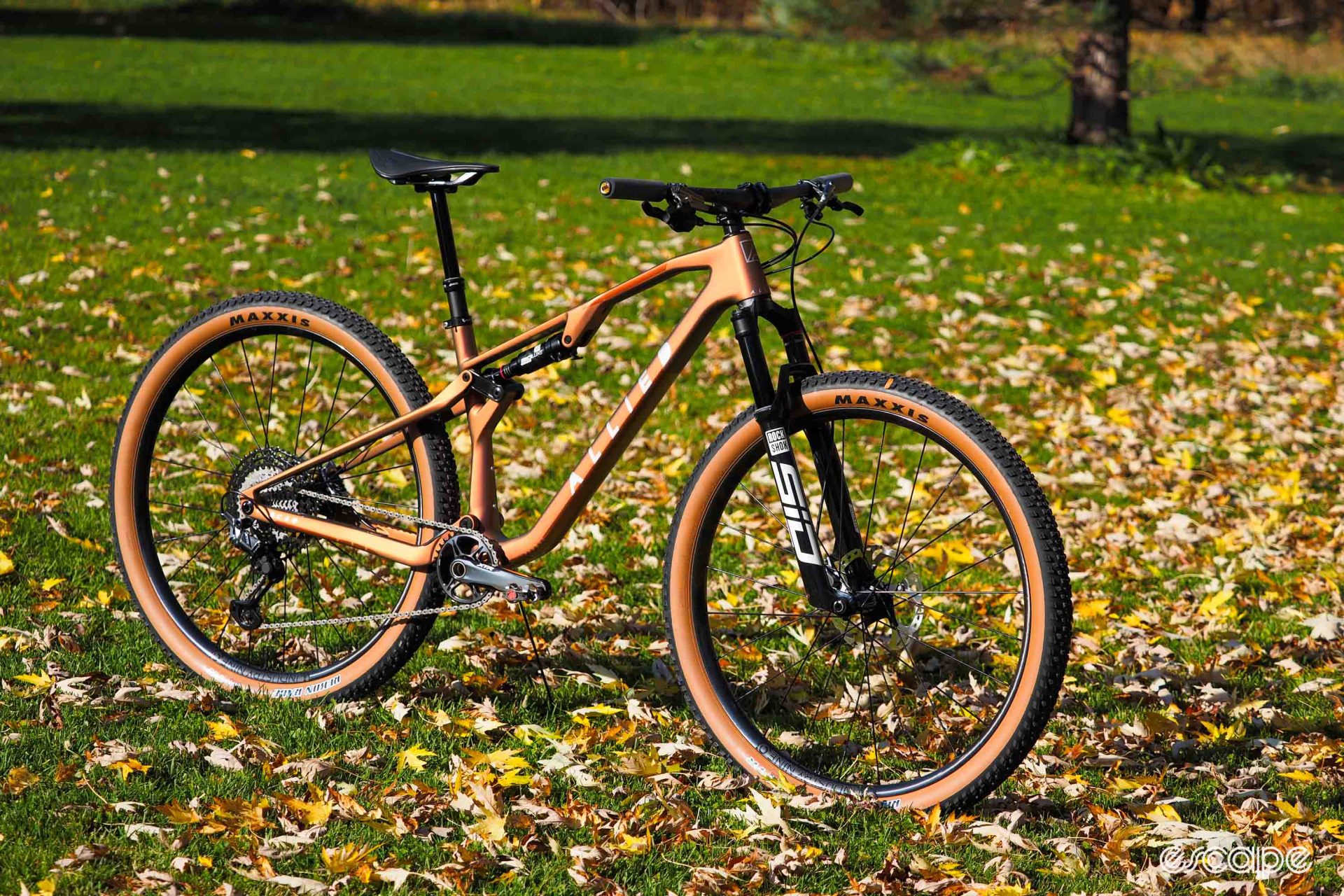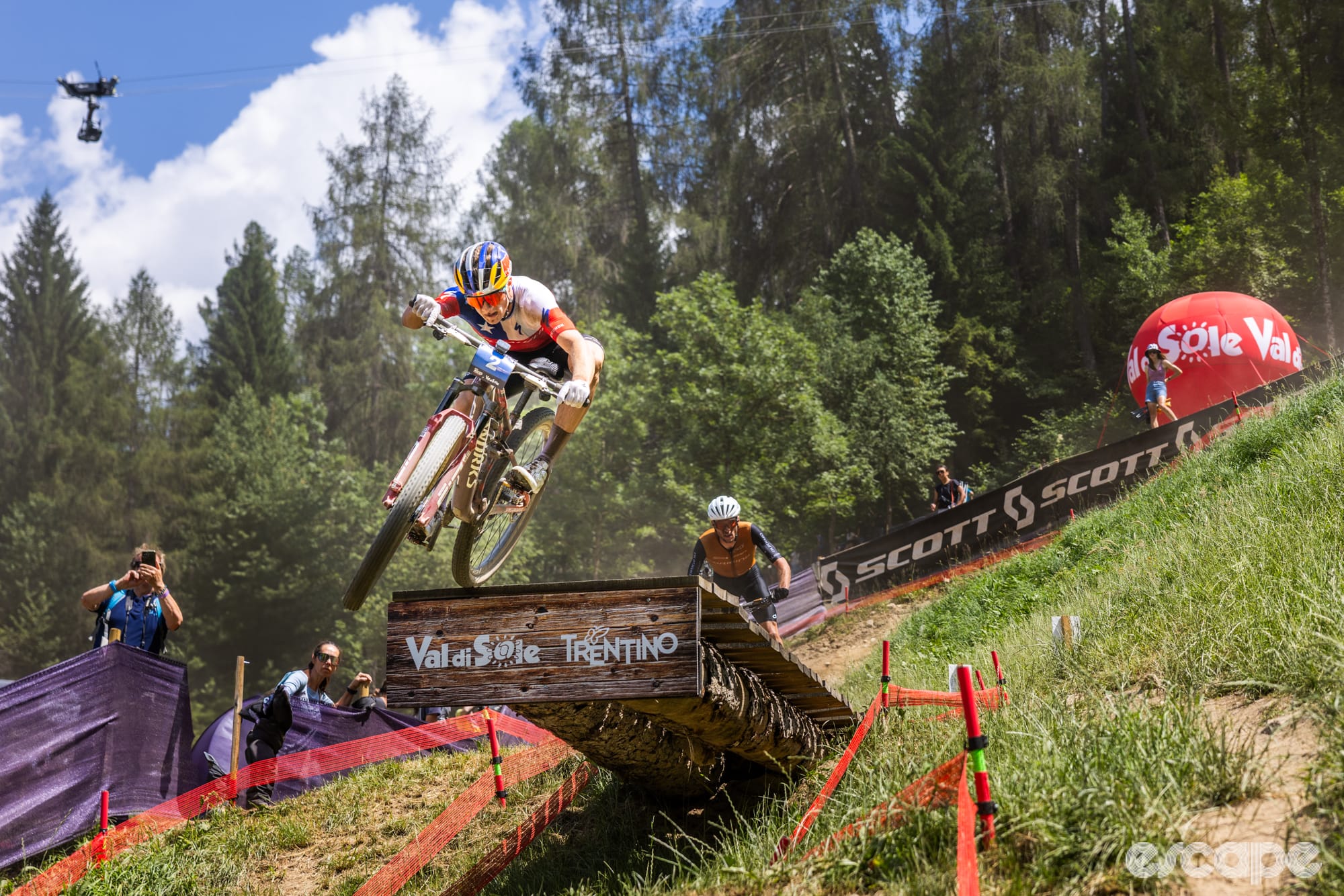Arkansas-based outfit Allied Cycle Works was exclusively a drop-bar brand when it debuted in 2017, so it raised more than few eyebrows when it launched its first mountain bike last year. Named after Benton County 40 – the road in Bentonville used to access the Back 40 trail network – the BC40 is practically the definition of a “downcountry” bike, combining the short suspension travel (120 mm front and rear), low weight, and excellent pedaling efficiency of a XC-oriented machine, but with a progressive long-low-and-slack geometry you’re more likely to find on a longer-travel trail bike.
“A majority of Allied employees ride and race mountain bikes,” explained Allied’s director of product and engineering, Sam Pickman. “It's a bike we've wanted to make, perfectly suited for the local trails we love to ride, and that was the goal.”
It’s also very pretty, it’s surprisingly competitive cost-wise with big brands considering its made-in-USA provenance, and holy crap, is it fast on the trail. But does it feel the way you expect for something like this? That depends.
Good stuff: Truly incredible pedaling efficiency, balanced handling, excellent frame stiffness, gorgeous lines, heaps of options, small-batch pedigree, not as expensive as you think.
Bad stuff: So-so small-bump compliance, bottle clearance could be better, only four sizes, needlessly oversized cockpit.
Price: US$4,350 (frame and rear shock); complete from US$6,500 (XT build)
The makings of the BC40
From a distance, Allied’s BC40 follows a familiar formula.
The front and rear triangles are both made of carbon fiber – fully molded in Allied’s Arkansas headquarters – and the 120 mm-travel rear end features a single-pivot, flexstay layout with a machined aluminum swing link up top driving the rear shock. Machined aluminum is also used for the “floating” rear brake mount, which – much like the Cervelo ZFS-5 I recently reviewed – is attached only to the chainstay so that the seatstay can flex more freely as the rear end moves through its travel. And because that rear shock is mounted just underneath the top tube, there’s enough room inside the main triangle for two water bottles – a critical feature for bikes of this genre.
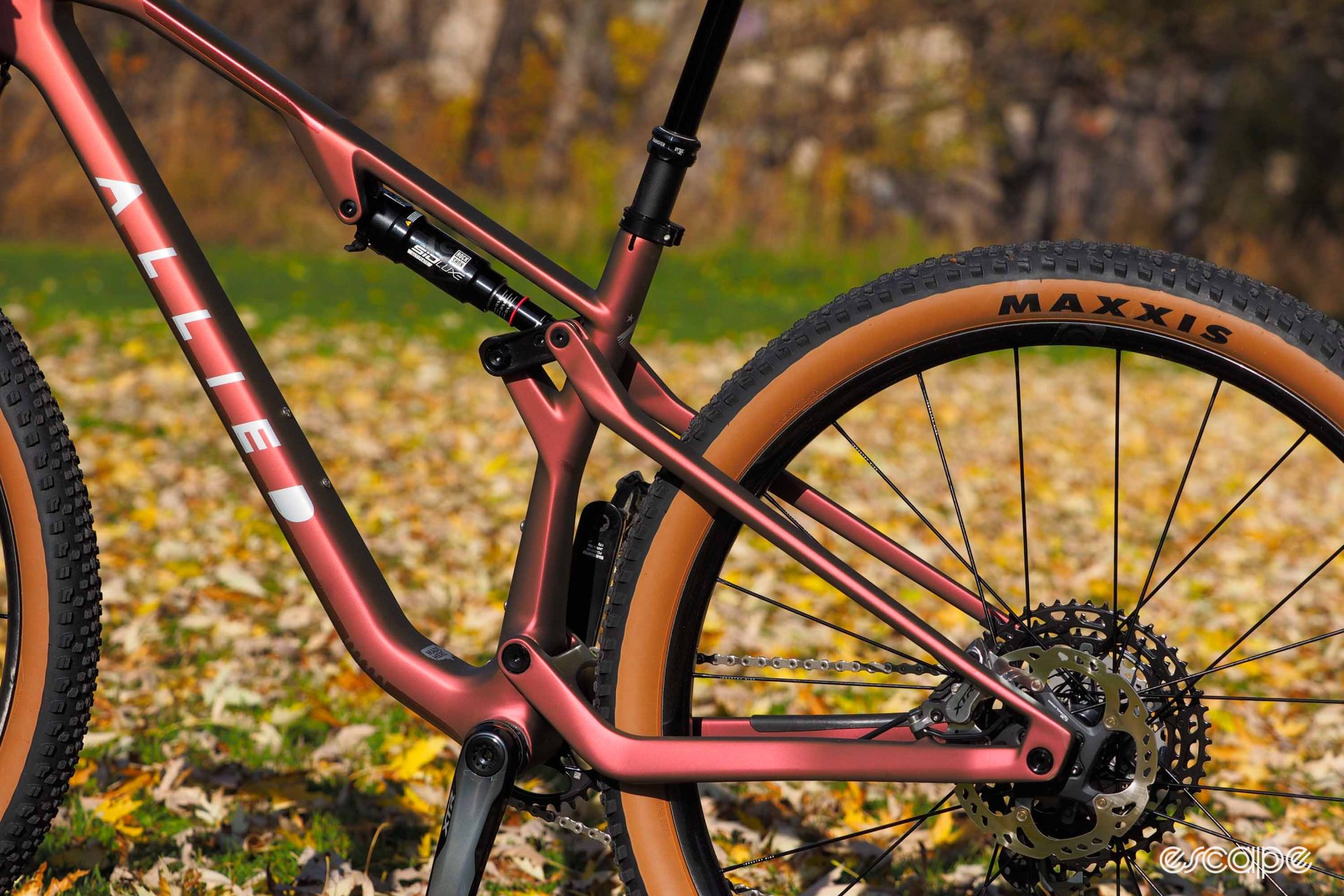
In keeping with current preferences, there’s a conventional threaded bottom bracket down below, while out back is a SRAM Universal Derailleur Hanger so you’re free to run a wide selection of mechanical and electronic drivetrains. Allied has thankfully resisted the much-maligned industry trend of running control lines through the upper headset. Instead, there’s a single oversized port on the side of the head tube that’s fitted with a tidy internal clamp to keep things from moving around too much, and with enough room for cable-actuated dropper posts and remote shock lockouts.
“We are slightly perplexed by the move to fully hidden cables on mountain bikes,” Pickman said. “The current levers, bars, and suspension forks don't lend themselves well to internal routing, so at best you get just slightly less external routing. In our opinion, the technology is not yet there to seriously consider it.”
Send me your home address, Sam. I’m adding you to my Christmas card list.
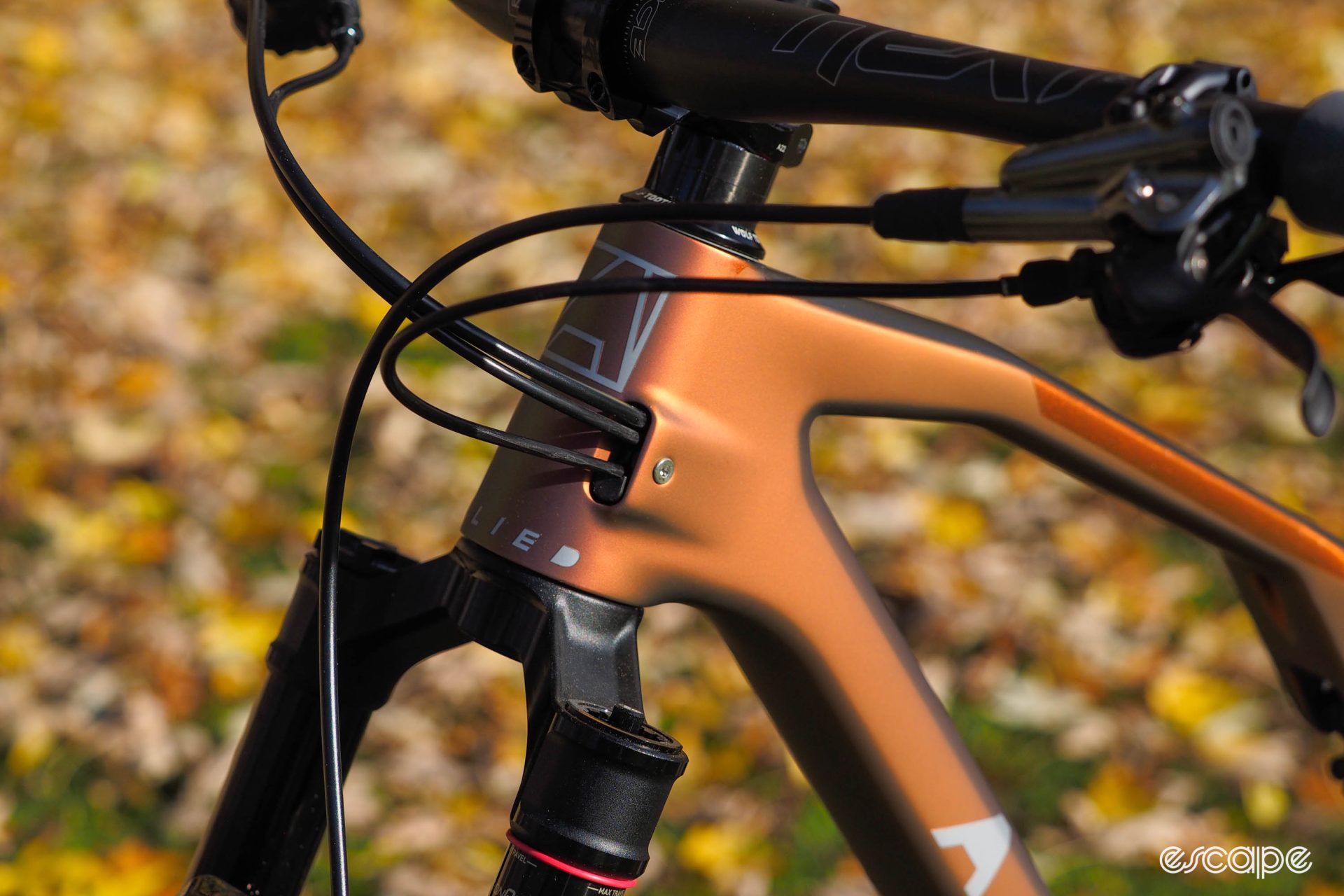
Claimed weight for a large BC40 with rear shock is 1,950 g (4.30 lb) – nowhere near as feathery as a Specialized S-Works Epic Evo’s insane 1,656 g (3.65 lb) figure, but still plenty light nonetheless.
One thing that helps to distinguish the BC40 is where it’s made, as well as the range of options offers.
Whereas the vast majority of full-suspension carbon fiber mountain bike frames are made in Asia (nothing inherently wrong with that, I should point out), Allied manufactures each BC40 at its facility in Rogers, Arkansas – just outside the Bentonville headquarters of Walmart, which is perhaps no concidence since the Walton brothers bought Allied in 2018. But while standard practice for the bike industry is to offer only preconfigured complete bikes and occasionally frames, Allied doesn’t stock anything aside from raw frames; everything is otherwise built to order.
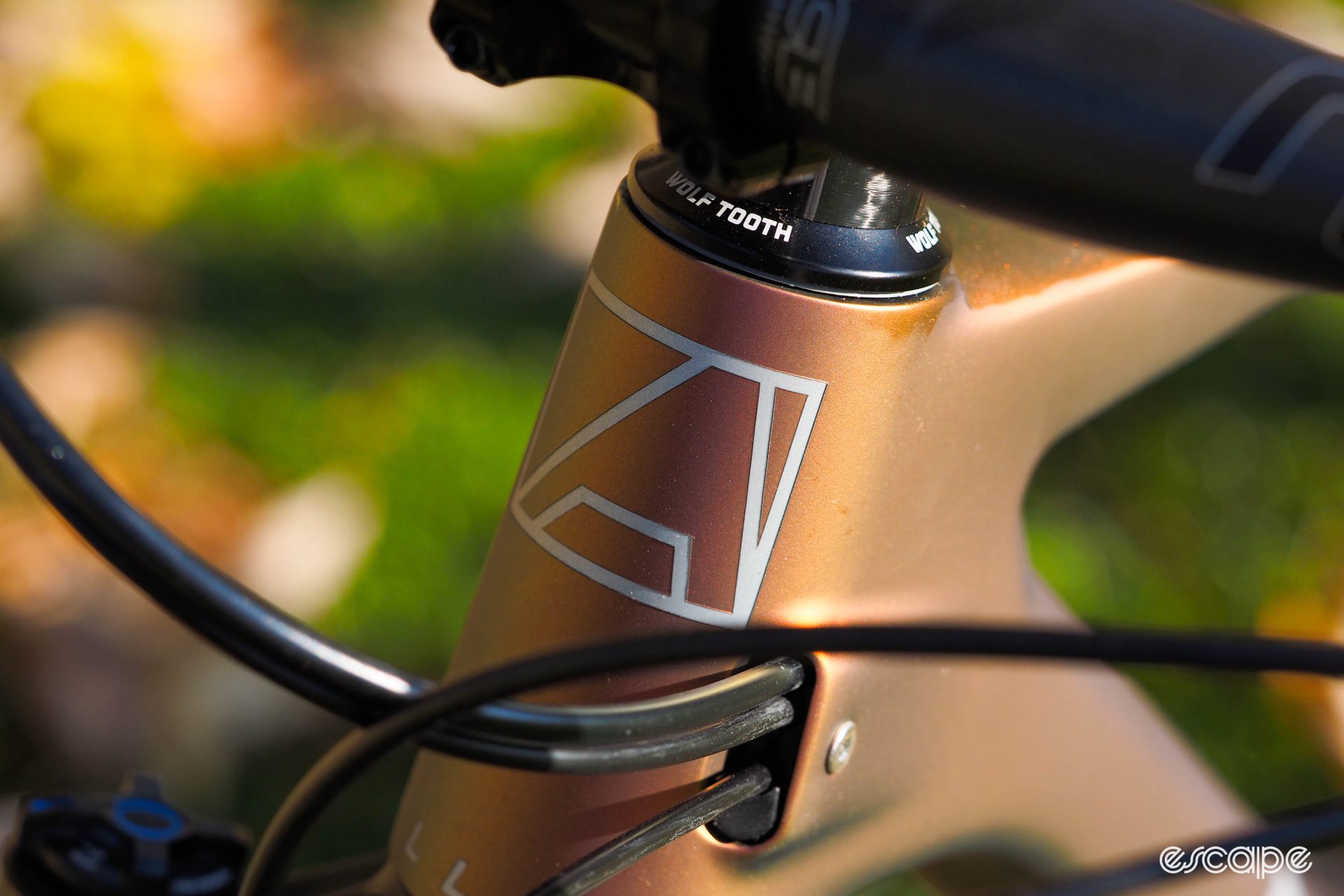
Seven stock frame colors and seven logo colors are available at no additional cost, and they can be configured separately so there are 49 possible combinations right off the bat. There are also eight fancier paint hues that range in upcharge from US$300-500 so you really can go pretty wild, although you are still limited to a fixed paint scheme regardless.
Allied also offers the BC40 in six Shimano and SRAM complete build kits, or if you prefer the DIY route, you can pick between bare frames and framesets that include a fork and headset. You can even select between RockShox and Fox suspension (and add a remote lockout for RockShox builds). So yeah, lots of choices.
What also sets the BC40 apart from most shorter-travel machines is the frame geometry, which embraces the long, low, and slack philosophy that has taken over the mountain bike world in recent years. For my medium-sized sample, that translates into a 445 mm reach, a 66.5° head tube angle, a 76° seat tube angle, compact 435 mm-long chainstays, a ground-hugging 40 mm of bottom bracket drop, and a generous 739 mm front center. Stems measuring just 50 mm long are specced across the board.
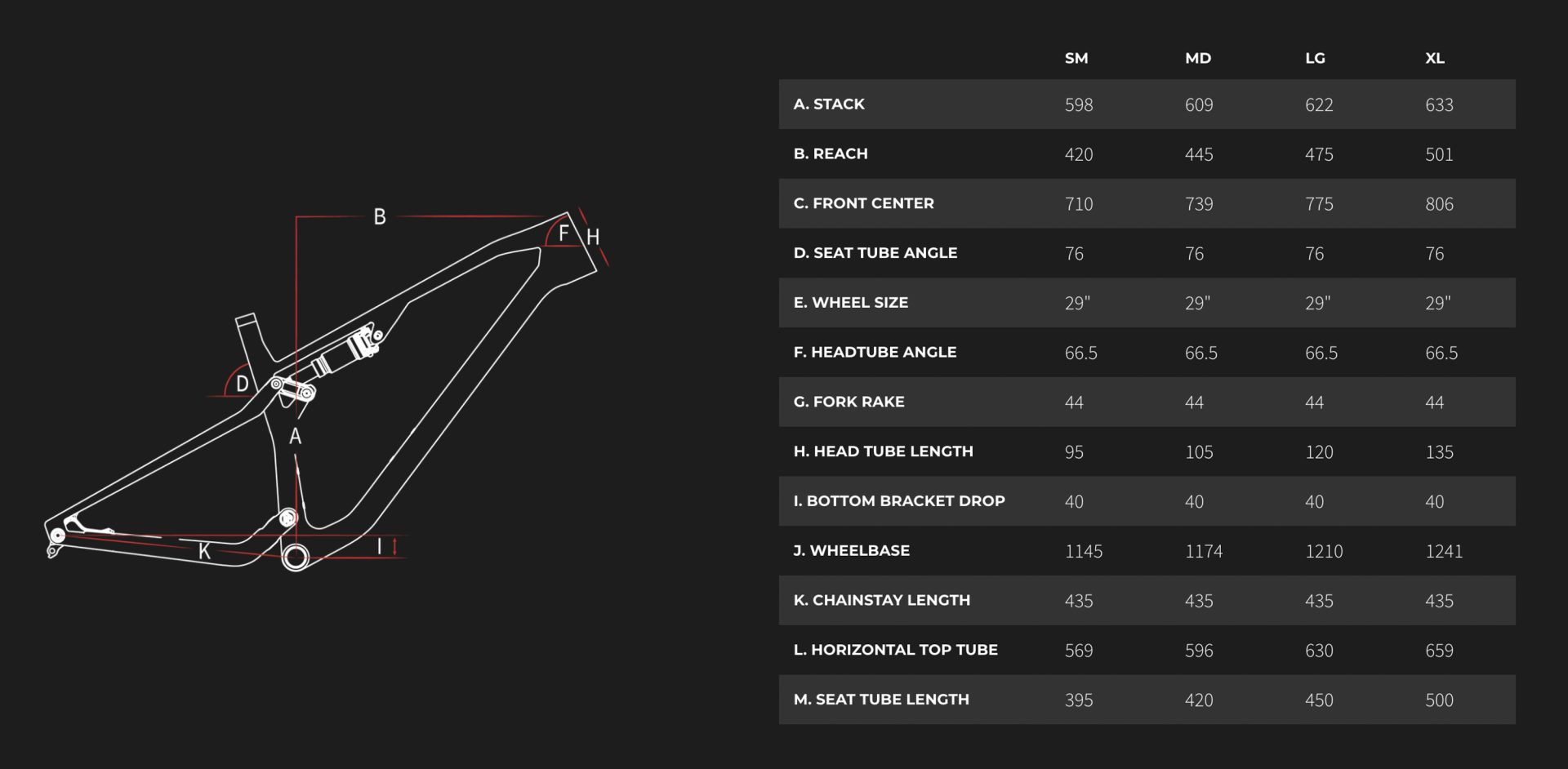
Those numbers might not make for the most agile setup, but given Allied’s intended goal for the BC40 of being a fast bike for a wide range of terrain, it’s a safer way to go than crafting it as a full-blown XC racer.
“The trails here are punchy, at times technical, and go on forever,” Pickman explained. “We thought the perfect bike to tackle them was a lightweight, great-pedaling, capable XC bike. We also have year-round riding, which results in a lot of wet days and has a reputation for tearing bikes up, so we wanted it to be reliable and easily serviceable.”
Allied graciously extended to me the freedom to spec my BC40 loaner how I wanted, and so the build kit is basically a personal wish list from the company’s menu of options: Shimano XTR mechanical with four-piston brakes and 180 mm-diameter rotors front and rear, RockShox’s latest SID suspension at both ends (with no remote lockout), a light-but-tough Industry Nine UL300 Carbon wheelset wrapped with 2.4”-wide Maxxis Rekon Race tires, a 150 mm-travel Fox Transfer dropper seatpost, a Race Face carbon bar and aluminum stem, ESI silicone foam rubber grips, Selle Italia’s inexpensive-but-comfy Model X Green Superflow saddle, and Wolf Tooth Components finishing kit – and yep, if you’re going to let me pick, I’m absolutely going to go with the fancy harlequin paint job.

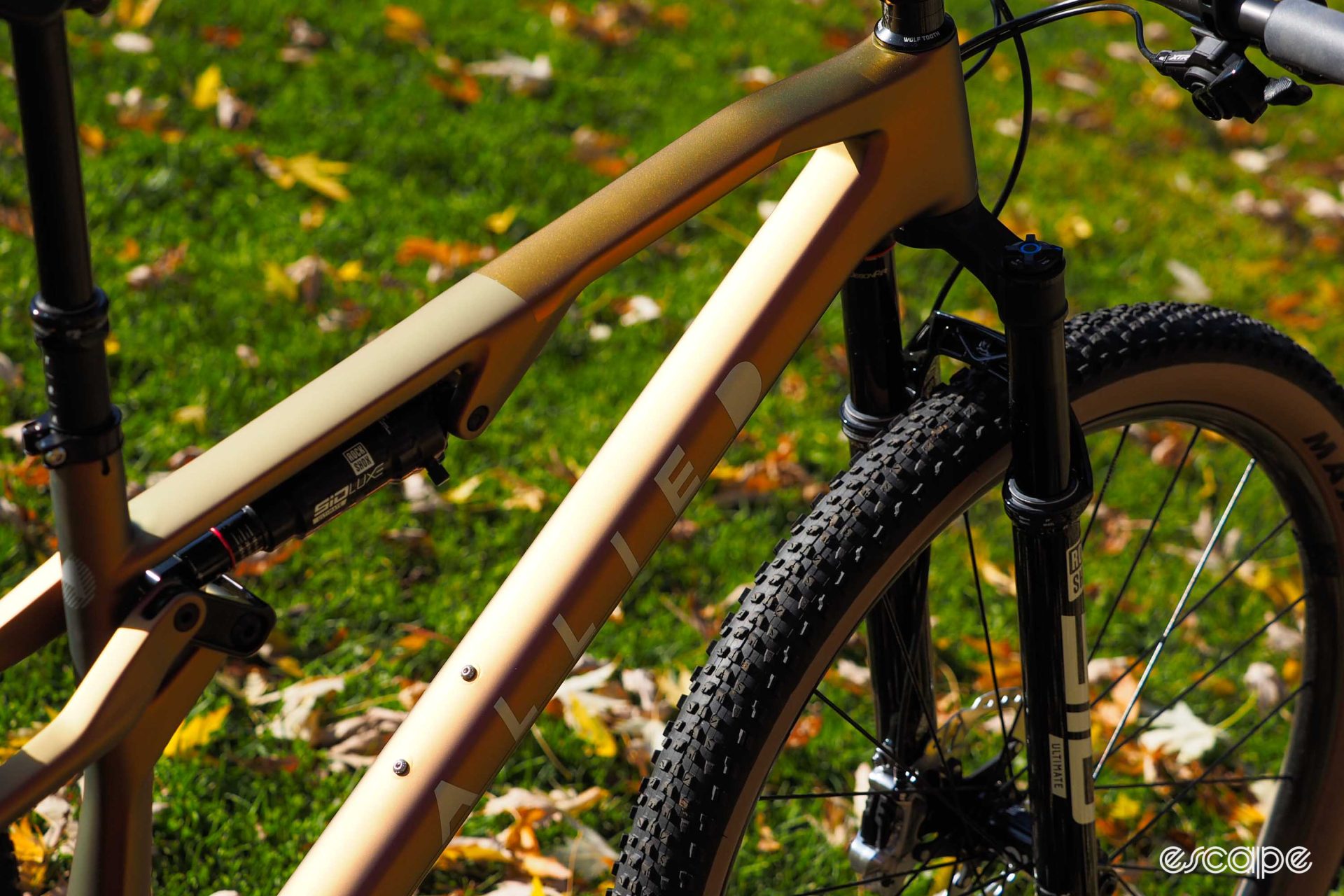
All told, it tipped the scales at 10.96 kg (24.16 lb) without pedals or accessories, and retail price as I configured it was US$9,670. (Allied bikes are sold outside of the US, but the company doesn’t set international retail pricing.)
Hitting the trail on the BC40
If your biggest priority in a downcountry-style XC bike is pedaling efficiency, well then you can just go ahead and stop reading right now because Allied nailed that aspect on the BC40. Even after having ridden a whole bunch of other super-efficient full-suspension bikes over the years, the BC40’s resistance to pedal-induced motion is shocking (no pun intended). Under power, the rear end simply Does. Not. Move.
What’s perhaps more impressive is that the bike doesn’t seem to rely on heavy-handed compression damping in the rear shock to achieve that performance, either, but rather a magical combination of anti-squat and leverage curve characteristics. To be honest, I’m not sure why Allied even bothers offering a remote lockout as it just isn’t necessary (at least out back).
“We chose the linkage-driven single pivot because we believe it is the lightest, simplest, and easiest base platform to get the performance you want,” Pickman explained when I sent him a bunch of questions about the suspension design as I was finishing up the review. “After that it is just tweaking the suspension geometry to give a ride characteristic that matches your intended use for the bike. We wanted this bike to ride like an absolute rocket, something that would reward a rider who loved to stay on the gas, which is why we landed where we did. From the feedback we have received, we believe we got it just about right.”
I’ll say.

Not surprisingly, between that incredible pedaling performance and the bike’s relatively low weight, the BC40 is a beast when either heading uphill or trying to maintain momentum on rolling terrain. Just keep putting the power down and it’ll keep surging forward with true hardtail-like efficiency.
The handling also felt pretty much spot-on to me. Allied may have hopped on the long-low-and-slack bandwagon, but it’s kind of more just along for the ride instead of actually driving the bus. The BC40 is on the longer side but it’s not especially so – and if anything, it actually feels a tad shorter than the reach dimension on the geometry chart might suggest (I’d advise going 10 mm longer in stem length than you might think). Still, when combined with the fairly slack front end, you’re rewarded with confidence-inspiring stability on steeper or technically challenging terrain. Low-speed agility is still pretty decent, too – at least if you’re more deliberate with your inputs. It’s admittedly not the best on the super-tight uphill switchbacks that litter my local stomping grounds, but generally speaking, I think most will find it to be a worthy tradeoff.
Frame stiffness is superb, too. The BC40 isn’t making a challenge for the lightest frame in the category, but the upside is its unusually stout and solid feel. While some lighter-weight bikes can feel soft enough that they load up and then rebound out of hard corners, the BC40 just plows through. Together with the trail bike-like handling, it reinforces the notion that it can handle a lot more than you’d think a 120/120 bike could. Go ahead and charge hard into the chunk or really drive the front end into that berm. It’s just completely uneventful.
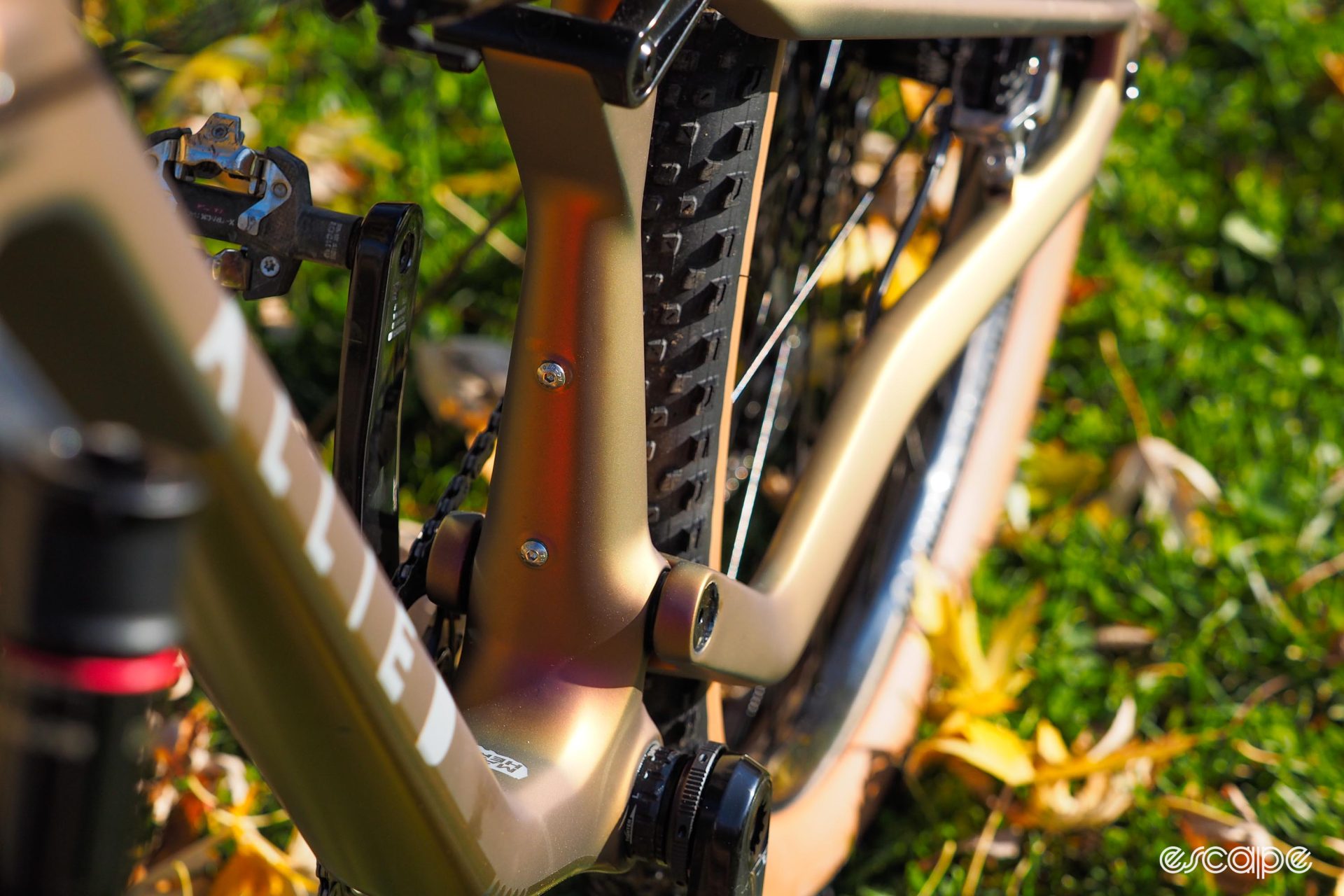
If you’re getting the impression the BC40 would be a fantastic bike for marathon-type events on technical terrain, that’s because it would be. It’s ruthlessly efficient at gobbling up terrain. Armed with a decent amount of fitness and a generous dose of skill, this would be one heck of a one-bike quiver for most riders who like to spend long days in the saddle with lots of climbing and descending.
And have I mentioned yet that it looks great? Bolstered with that harlequin paint upgrade, my BC40 loaner certainly garnered more than a few compliments from passersby.
Yet as good as the BC40 is at covering ground, I also don’t think the feel of the rear suspension will suit everyone.
It’s incredibly resistant to pedal-induced motion and also tackles bigger drops and harder landings surprisingly well considering how little travel is on hand, but it’s also not the liveliest or most active-feeling rear end. In particular, initial sensitivity off the top isn’t as good as I prefer, to the point where bikes with more active suspension designs like that Epic Evo or the Cervelo ZFS-5 would potentially be better on more technical climbs where traction is key.
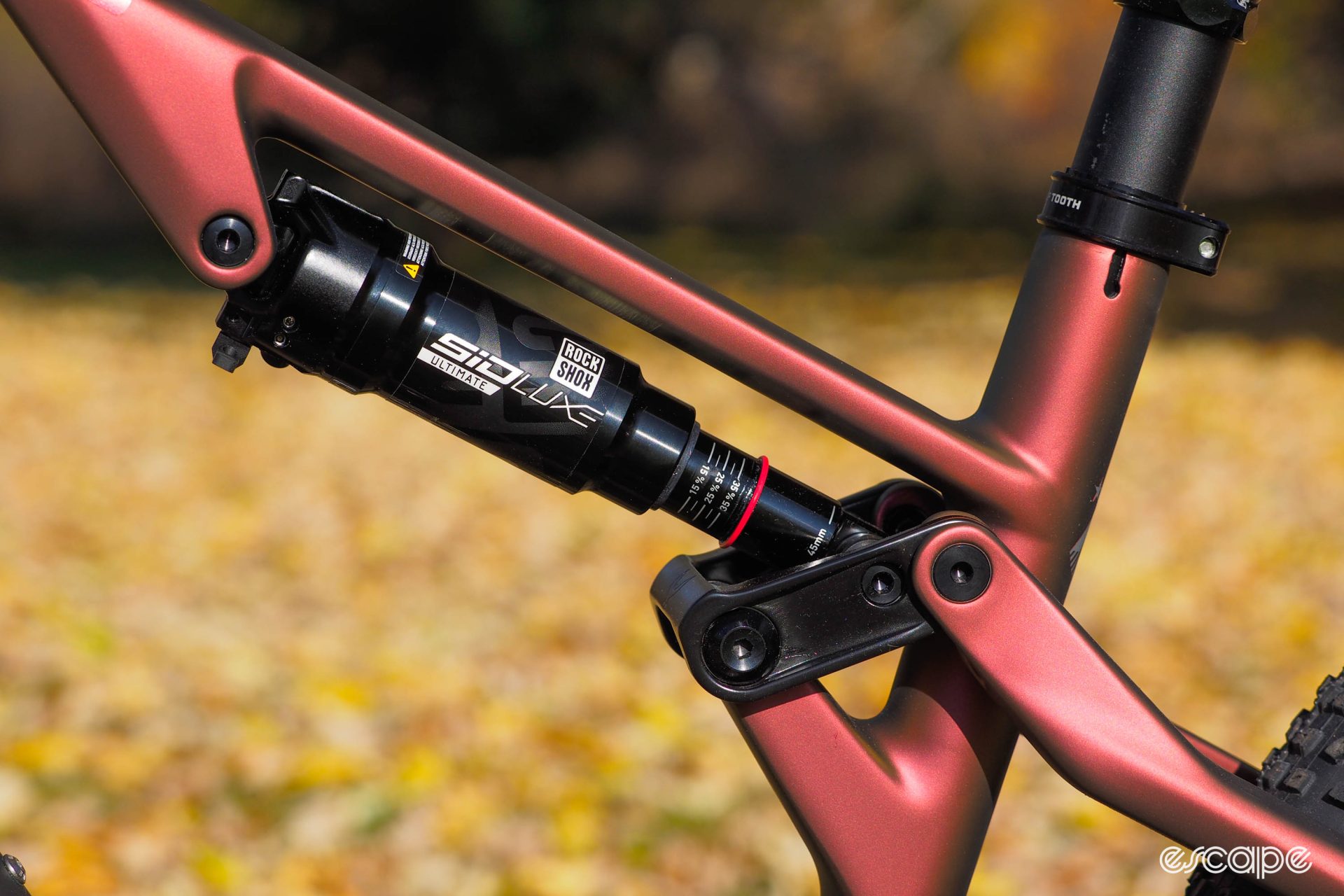
Some deeper discussion on the rear shocks is warranted here. As I mentioned earlier, Allied offers the BC40 with two different rear shock options, and I was thankfully able to try both of them.
I spent most of my testing time on the RockShox SIDLuxe Ultimate rear shock, which was recently treated to an updated damper tune for better small-bump compliance. Indeed, it’s a tangible improvement over previous iterations I’ve used, seemingly without any negative impact to overall support or big-hit control. Riders falling more on the XC end of the spectrum who want pedaling efficiency above all else should probably go this route, but I’d otherwise probably recommend the Fox. Although the difference in small-bump sensitivity wasn’t as big as I expected, it’s still there. There’s almost no change in pedaling efficiency or additional weight, either (less than 10 g, in fact).
According to Pickman, both shocks are specced with medium compression valving to maintain that super-quick feel the brand desired for the BC40.
“We have people at the shop and customers that prefer the firmer pedaling platform,” he told me.
Fair enough, but there’s so much resistance to pedaling movement built into the suspension kinematics that Allied probably could have gone with a lighter compression tune for a more stuck-to-the-ground feeling. The BC40 isn’t unlike my experience over the years with many bikes built with dw-link rear suspension: when the pedaling efficiency is baked into the suspension design itself, there’s less compression damping needed to get the pedaling performance you want. Thankfully, that sort of modification isn’t expensive, and is also easy to bundle when it comes time for the first rear shock overhaul.
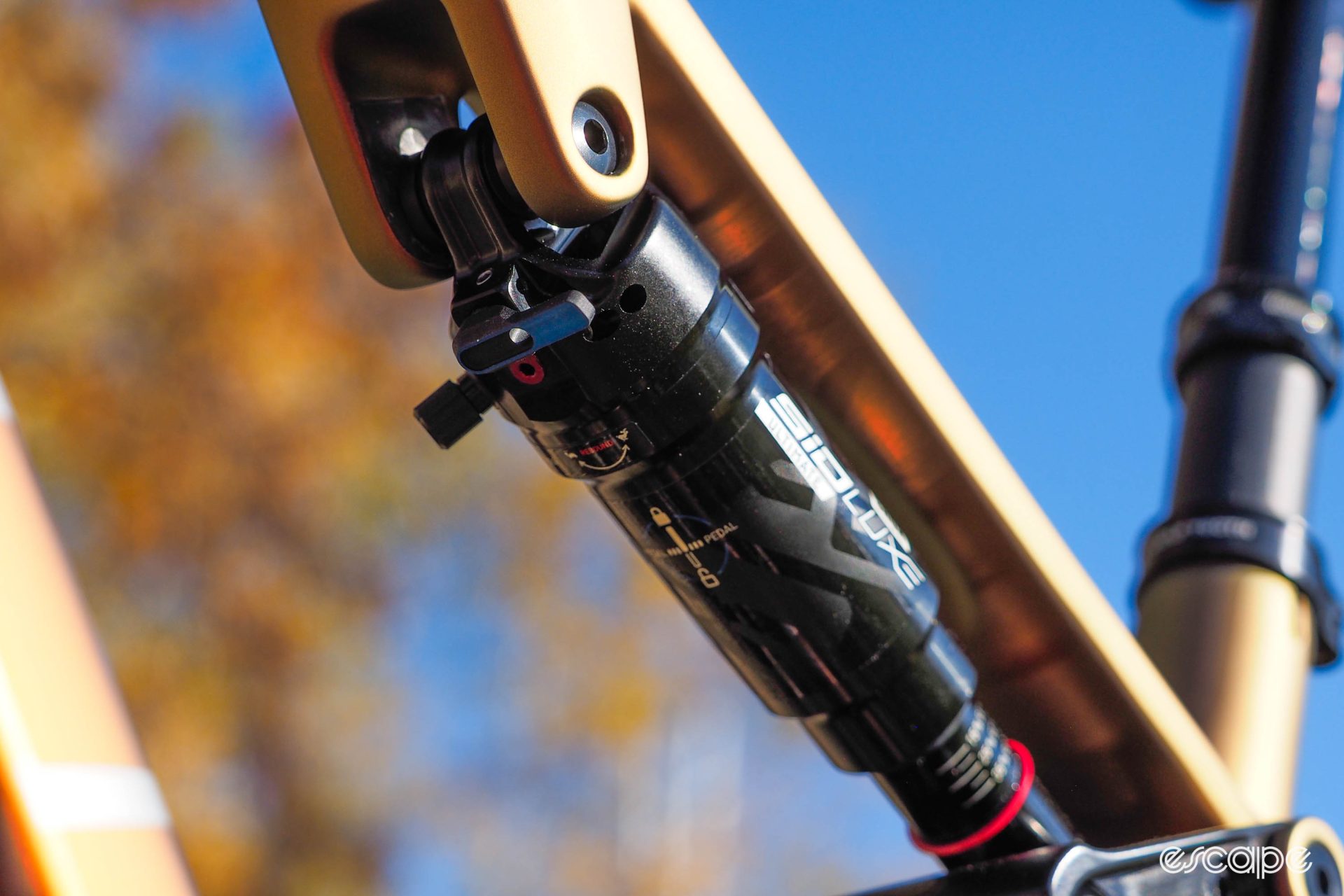
In either case, the setup window is remarkably broad. Allied recommends inflation pressures around your body weight (in pounds) +/- 10 psi or so. I ultimately settled on around 157 psi (I’m about 162 lb right now), which ended up being around 25% sag. But even dropping down closer to 30% sag did almost nothing in terms of pedaling efficiency, which only further reinforced my hypothesis that the BC40 could easily get away with less compression damping.
Moving away from the bigger aspects of the BC40, the attention to detail and apparent emphasis on quality are hard to overlook.
I love the symmetrical lines of the frame, and the way the frame components from Wolf Tooth and Robert Axle carry on with the whole US-made theme. The clamp on the cable entry port keeps the lines from moving around too much, but still allows for a little adjustment on the fly. The water bottle bolts are stainless steel, with low-profile button heads for maximum cage compatibility. There’s also just that sense of specialness that comes with one of these: the relative rareness, the idea that it isn’t made on some huge assembly line. And while I initially attributed the use of a 30.9 mm-diameter seatpost in the 31.6 mm seat tube (with a shim) as an availability issue, Pickman said it was actually a conscious decision.
“The frame works with both 30.9 and 31.6 posts. We default spec 30.9 post with a shim as it allows for a deeper insertion depth and longer-travel dropper spec, which is what customers prefer.”
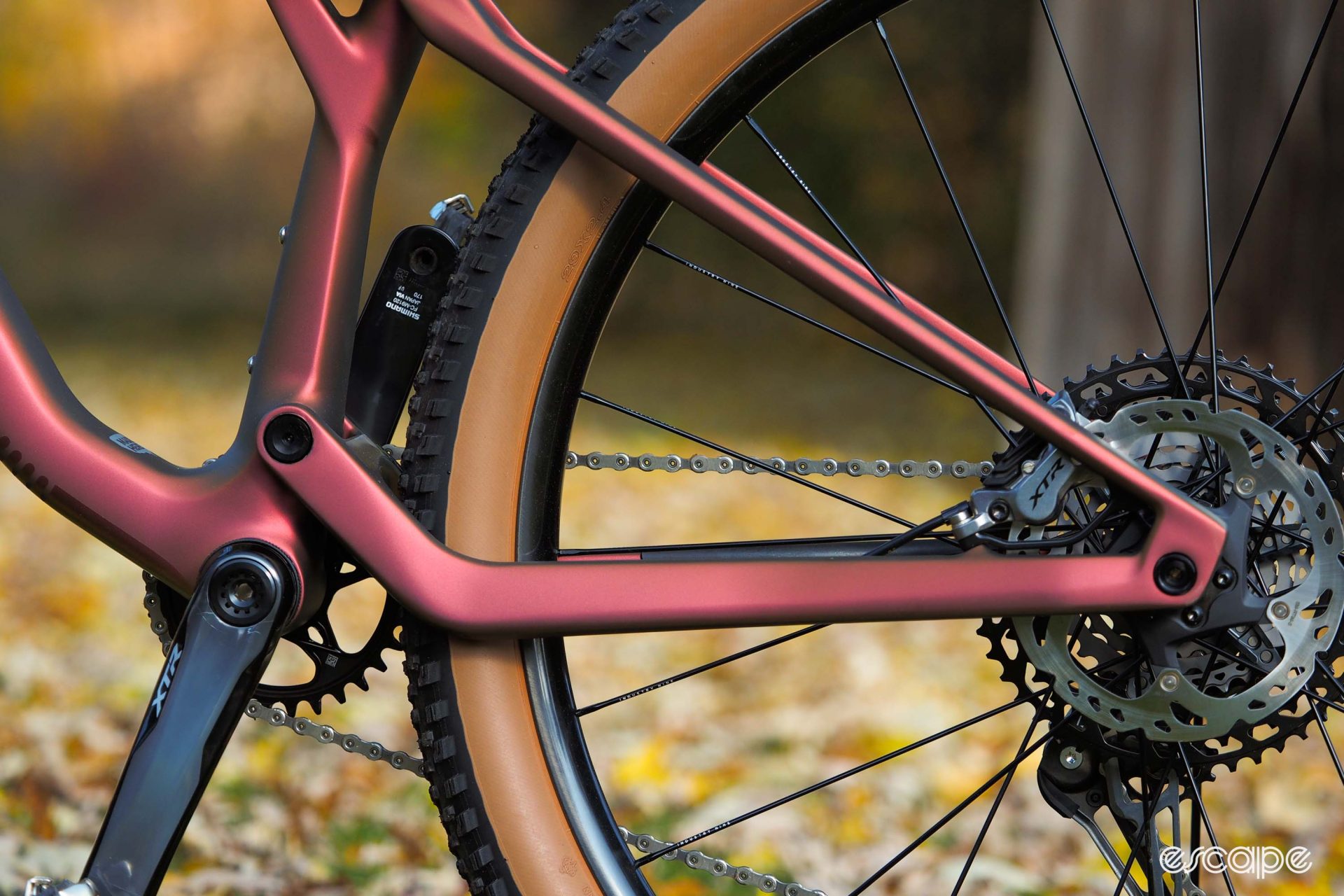
That all said, I did have my gripes with this thing.
Tire clearance is generous for a short-travel bike at 2.4” front and rear, but the very top of the seatstays are still wider than they need to be, and occasionally rubbed on my knees and calves. The main frame has spots for two water bottles, but even on my medium-sized tester, the seat tube position is awfully tight (switching to a tandem arrangement on the down tube like my Rocky Mountain Element Carbon strikes me as a more efficient use of space). Allied had also clearly intended for some kind of chain guide to be mounted to the swingarm pivot hardware, but alas, there was none.
“It was designed to have a very small chain keeper,” Pickman admitted, “but it didn't work great and at the very last minute we decided not to include it.”
Bummer.
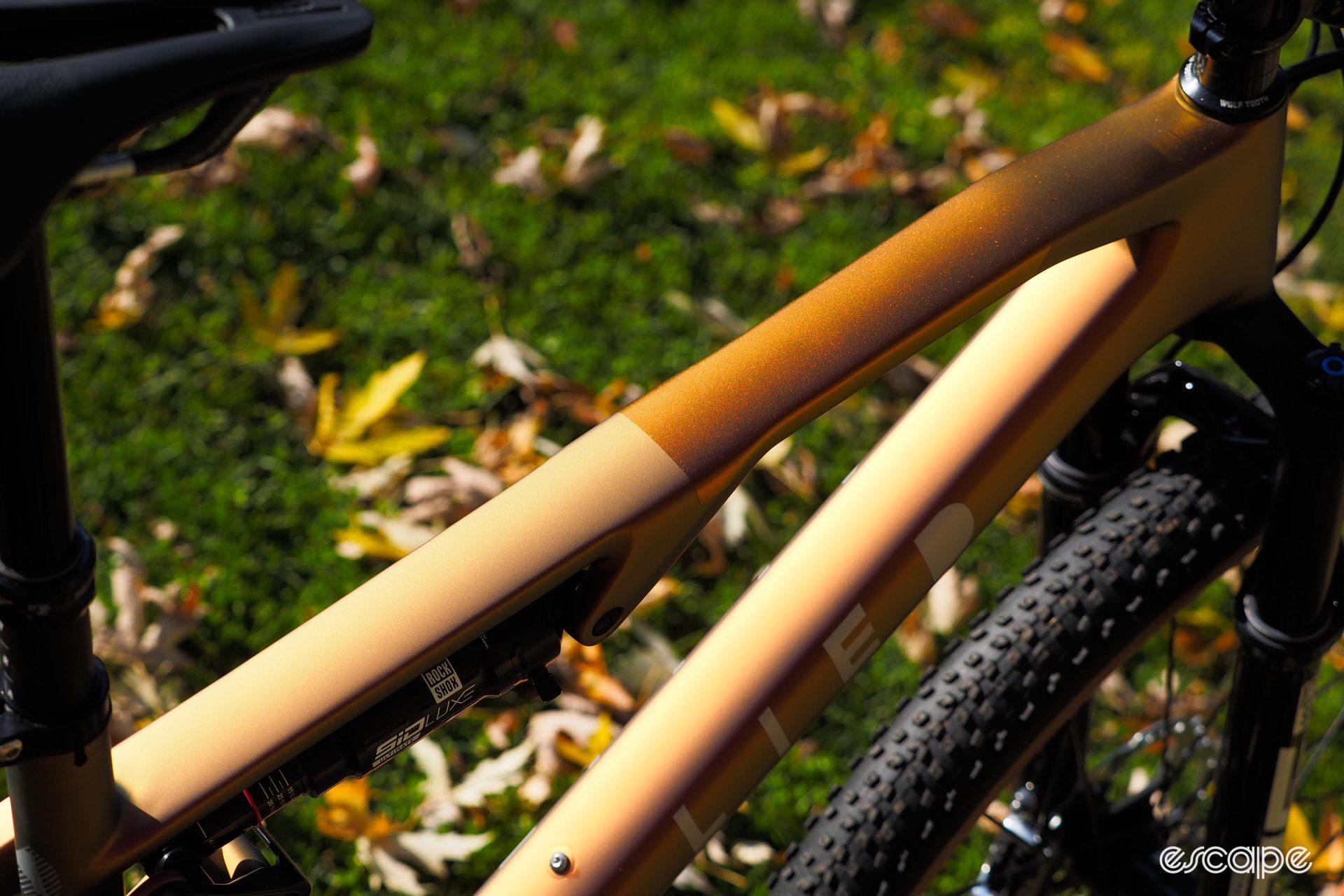
My test bike also arrived with gloss-finish protective tape on the top tube and down tube when it apparently should have been fitted with matching matte tape – oops. And speaking of protection, while it obviously would have added weight (and cost on Allied’s part), I would have liked to see something a little beefier on the underside of the down tube than just clear vinyl, although riders in less-rocky terrain probably won’t be as bothered about it.
"With weight being one of our primary objectives we opted to go with the stick-on protectors," said Pickman. "Tooled plastic protectors are surprisingly heavy. The ones we use last better than a year of very hard use, and if someone needs to replace them we are happy to send a kit.”
Build kit breakdown
I didn’t have a chance to try both fork options like I did with the rear shocks, but I was nevertheless pleased with the RockShox SID Ultimate featured here. Like the SIDLuxe rear shock, the fork got a similar damper revision this year for better small-bump compliance, and it’s unquestionably an improvement. Prior experience with the Fox tells me that option is still more supple, but the gap has narrowed considerably, and again, riders that want an efficient feel above all else should probably go with RockShox front and rear.
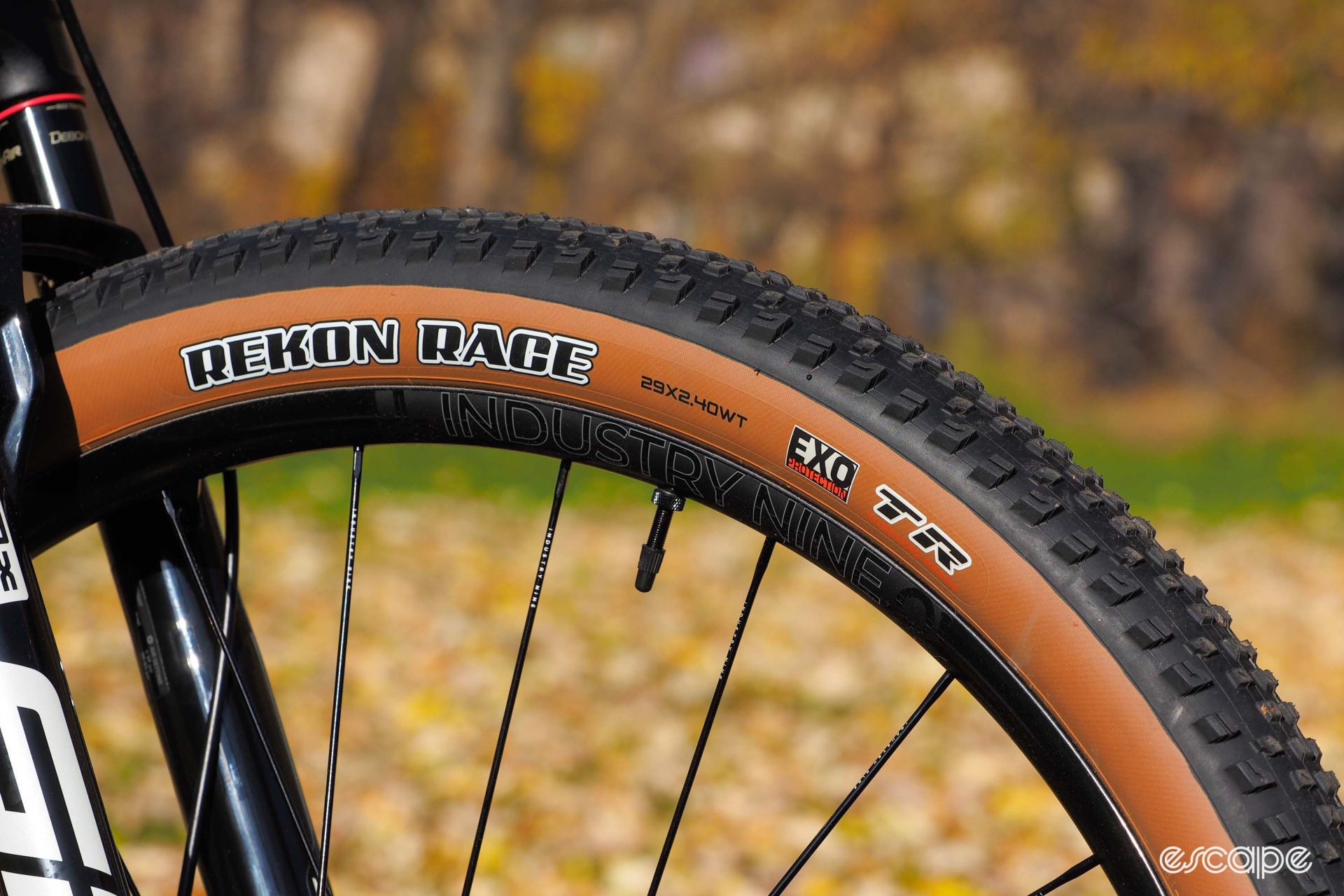
The Industry Nine UL300 upgrade wheels on my tester stay true to the overall theme here, with a stiffer ride quality owing to those large-diameter aluminum spokes that’s well suited to the bike’s hard-hitting personality. The rim’s 30 mm internal width provides excellent support for the 2.4”-wide Maxxis Rekon Race tires, too, and as someone who enjoys the challenge of technical climbs, I’m a big fan of the Hydra rear hub’s insanely quick 0.52° engagement speed (not to mention the sound).
Speaking of tires, that’ll be a regional and personal thing, as always. I loved the speed those lower-profile Rekon Race tires provided, and despite the barely-there knob heights down the middle, they’re surprisingly tough. In hindsight, though, going with the slightly meatier Rekon up front probably would have been the more prudent choice for my predominantly loose-over-hardpack conditions. But again, YMMV.
Some of you might have been surprised to see that I requested a Shimano XTR mechanical groupset for this bike. After all, there are a number of fancier and newer electronic options on the market these days, and despite it being Shimano’s flagship mountain bike groupset, XTR is long overdue for an update. However, I still like the tactility of mechanical drivetrains off-road, and XTR remains the gold standard in my opinion. Shifts are uncannily smooth – and fast! – and if you regularly shift multiple gears in one go like I do, Shimano’s setup is the best in the business, mechanical or electronic.
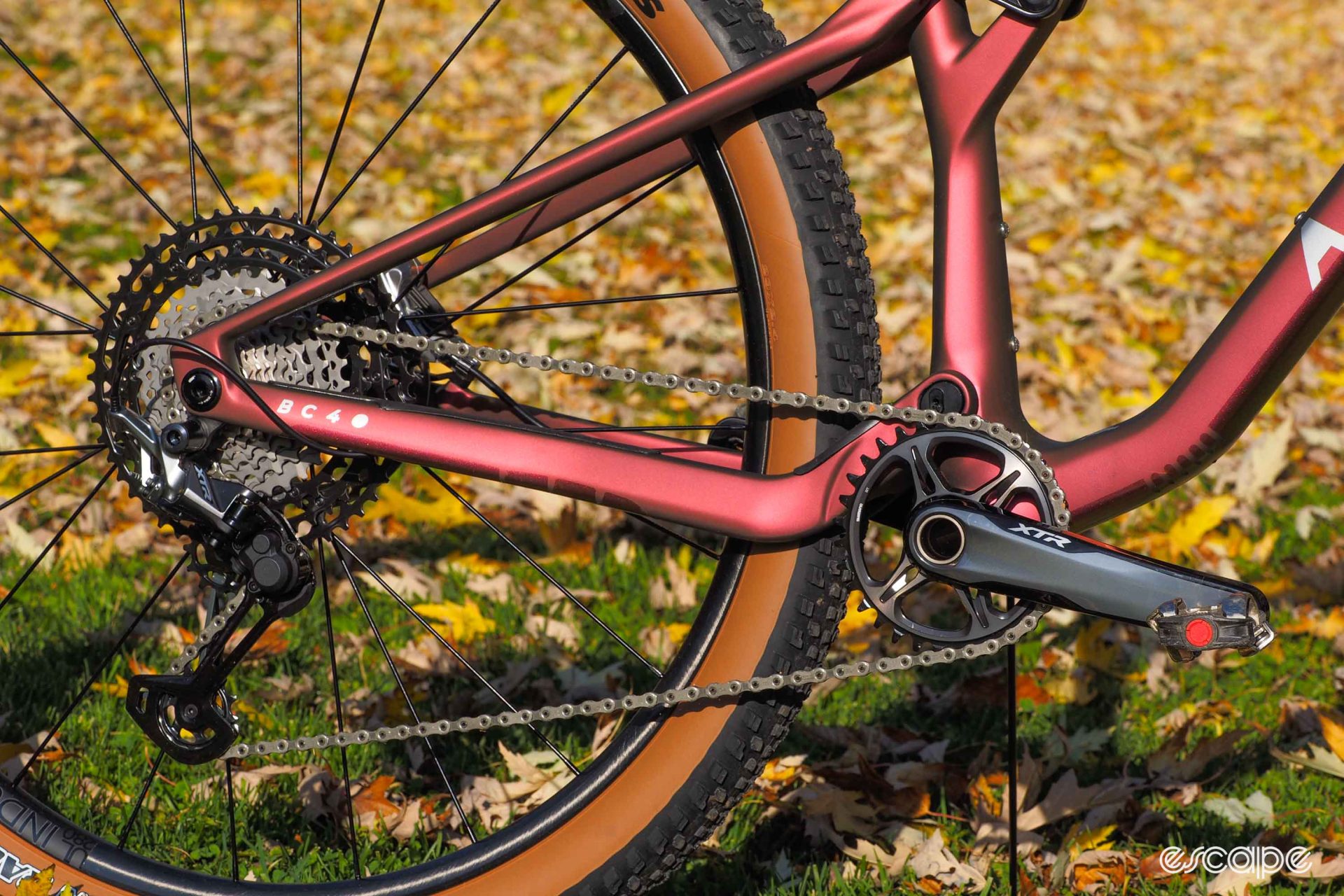
The matching four-piston brakes with 180 mm rotors also offered more than enough power for this genre, along with a light lever action rich with feedback and a highly positive contact point. I do wish Shimano would finally fix long-standing issues with weeping piston seals as my front pads were already starting to get slightly contaminated by the time I was done with testing, despite there being no obvious leaks.
As for the other bits, the 35 mm-diameter Race Face cockpit was excellent overall, but arguably too stiff for an XC bike in my opinion. That oversized dimension was originally billed as a bigger and stronger option for longer-travel bikes when it was first introduced, but somewhere along the way, it’s evolved into yet another one of those “well, more must be better” things. Quite tellingly, a growing number of brands are coming out with softer-riding 35 mm-diameter bars, but I’d love to just see 31.8 mm come back for shorter-travel bikes.
Finally, the Fox Transfer dropper worked fine for the most part, although it was already starting to get a little sticky by the end of my review period. And that Selle Italia Model X saddle? It may seem curiously inexpensive for a bike of this ilk, and I’d say the top is a little too grippy for off-road riding. However, it’s also super comfy.
Trail demon
Overall, the BC40 is indeed the “rocket” Allied intended it to be in terms of how quickly it covers ground, while also being much more capable than you might expect of a bike with just 120 mm of travel at both ends. XC racers looking for something just as speedy as a full-blown race bike but with more versatility will absolutely find a lot to like here. It’s perhaps no surprise that I saw a disproportionate number of these things at the Breck Epic mountain bike stage race this past August as it would indeed just be about a perfect machine for such a broadly challenging event like that.
Nevertheless, full-suspension bikes are a game of nuance and millimeters, and there’s little on paper that would suggest to most how the BC40 would feel underneath you. Although incredibly quick and capable, its personality isn’t what I expected it to be. Whether you characterize it more as “sedate” or “quietly competent” will likely fall to personal preferences, though, and as always with something like this, if the option is at all available to you, a test ride would likely tell you all you need to know.
Either way, enough with people pointing out how expensive the BC40 is, because the reality is it’s right inline with other premium offerings. If anything, perhaps the question people really should be asking is why those other mainstream offerings cost as much as they do – but that’s a topic for another day.
More information: www.alliedcycleworks.com
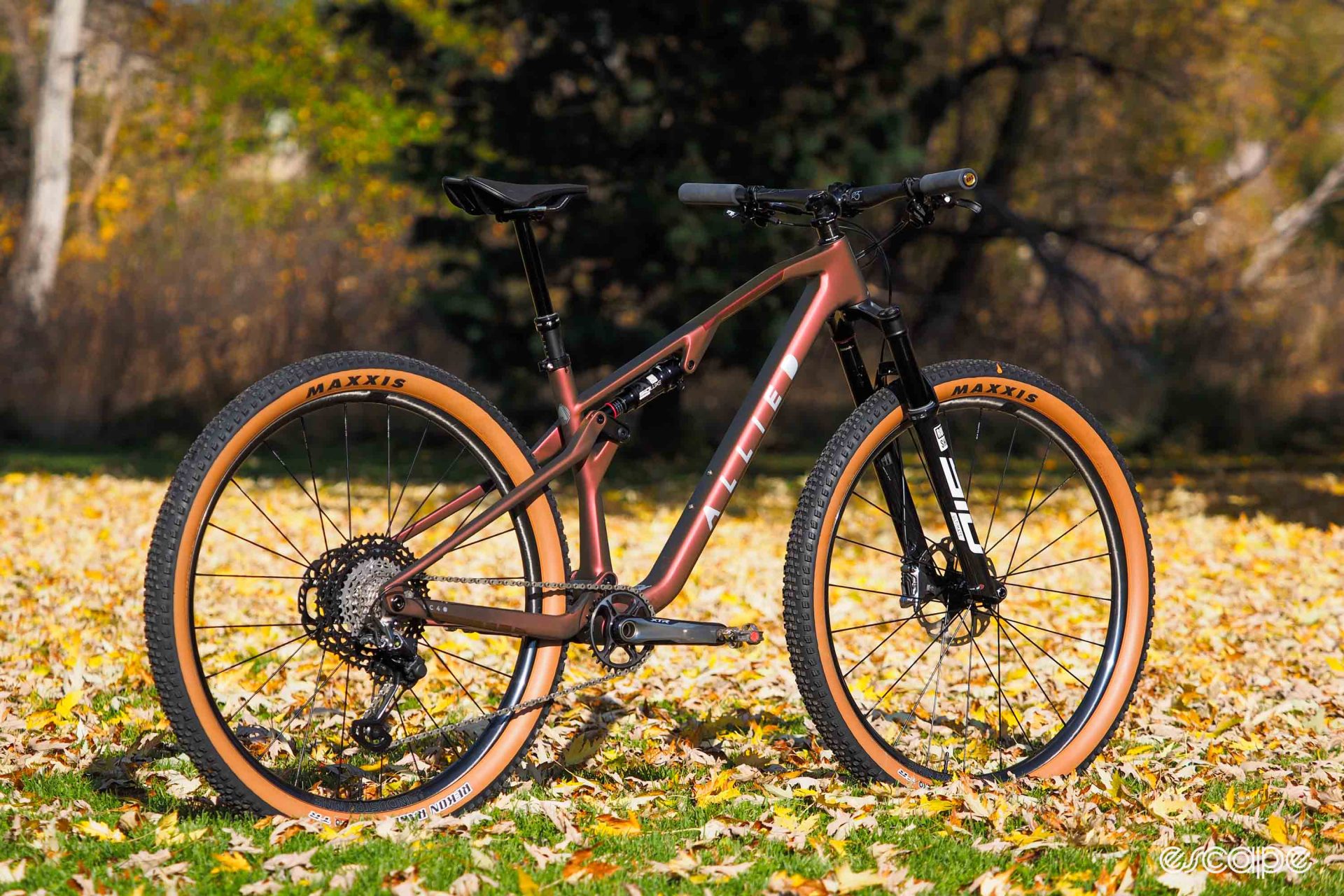
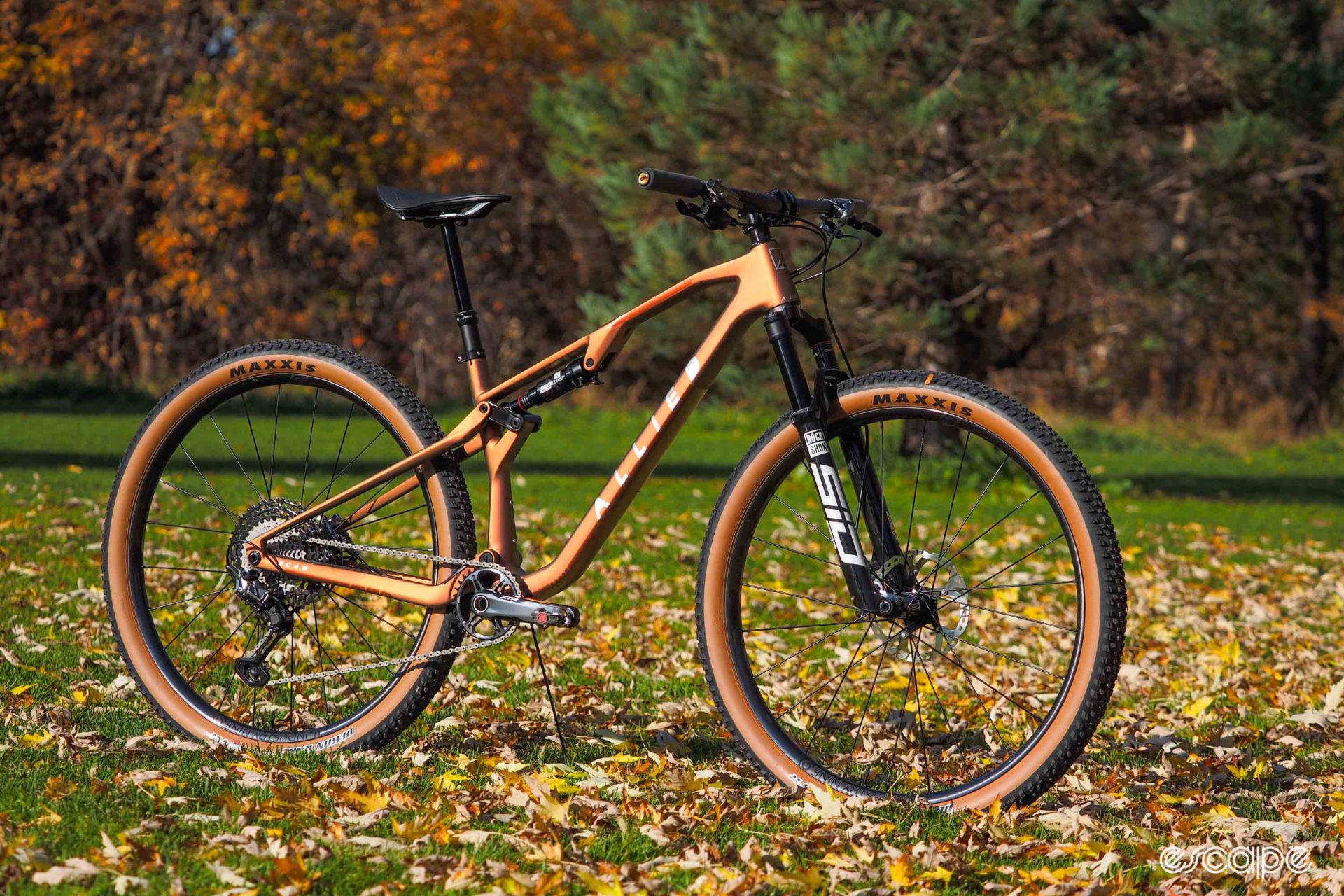
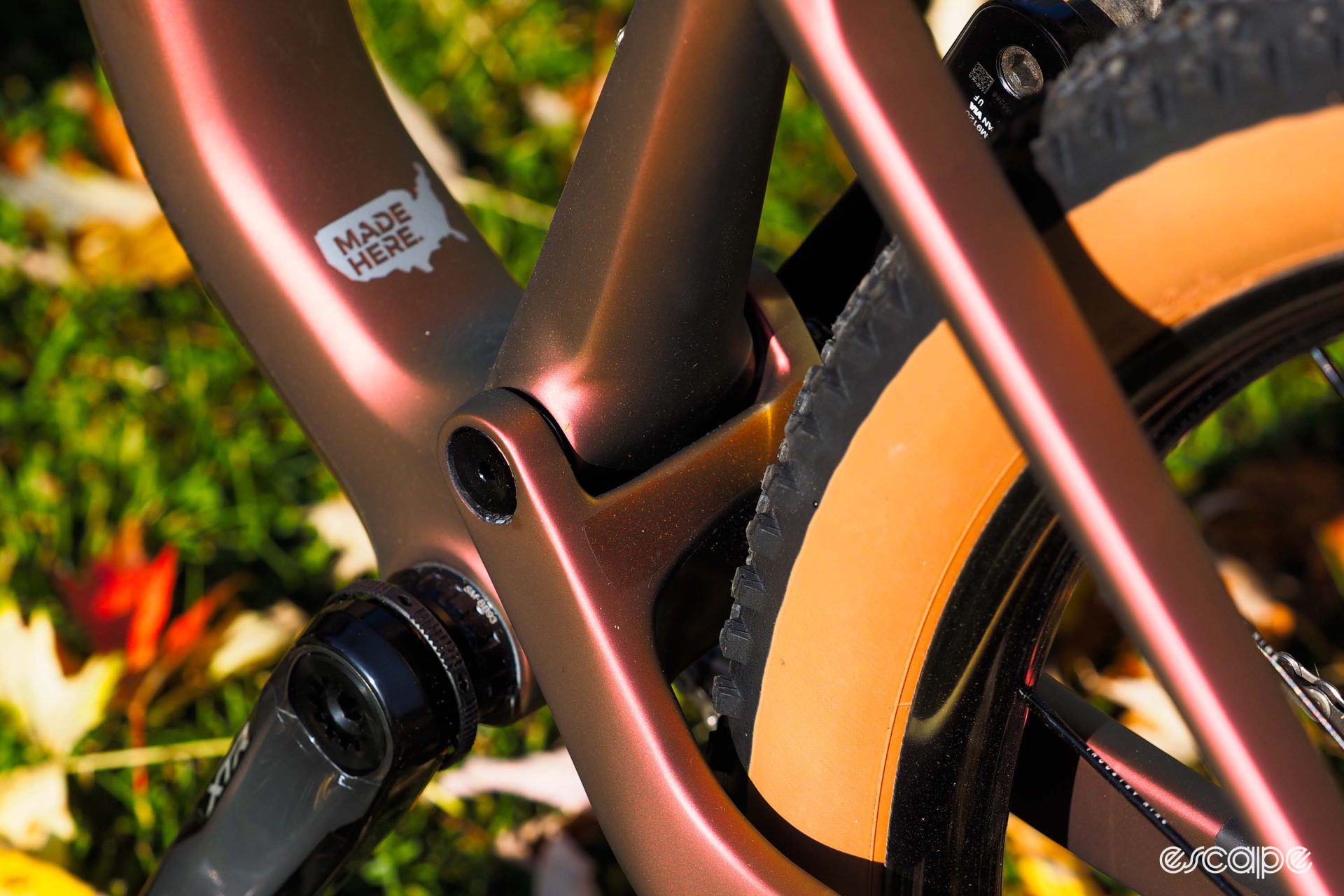
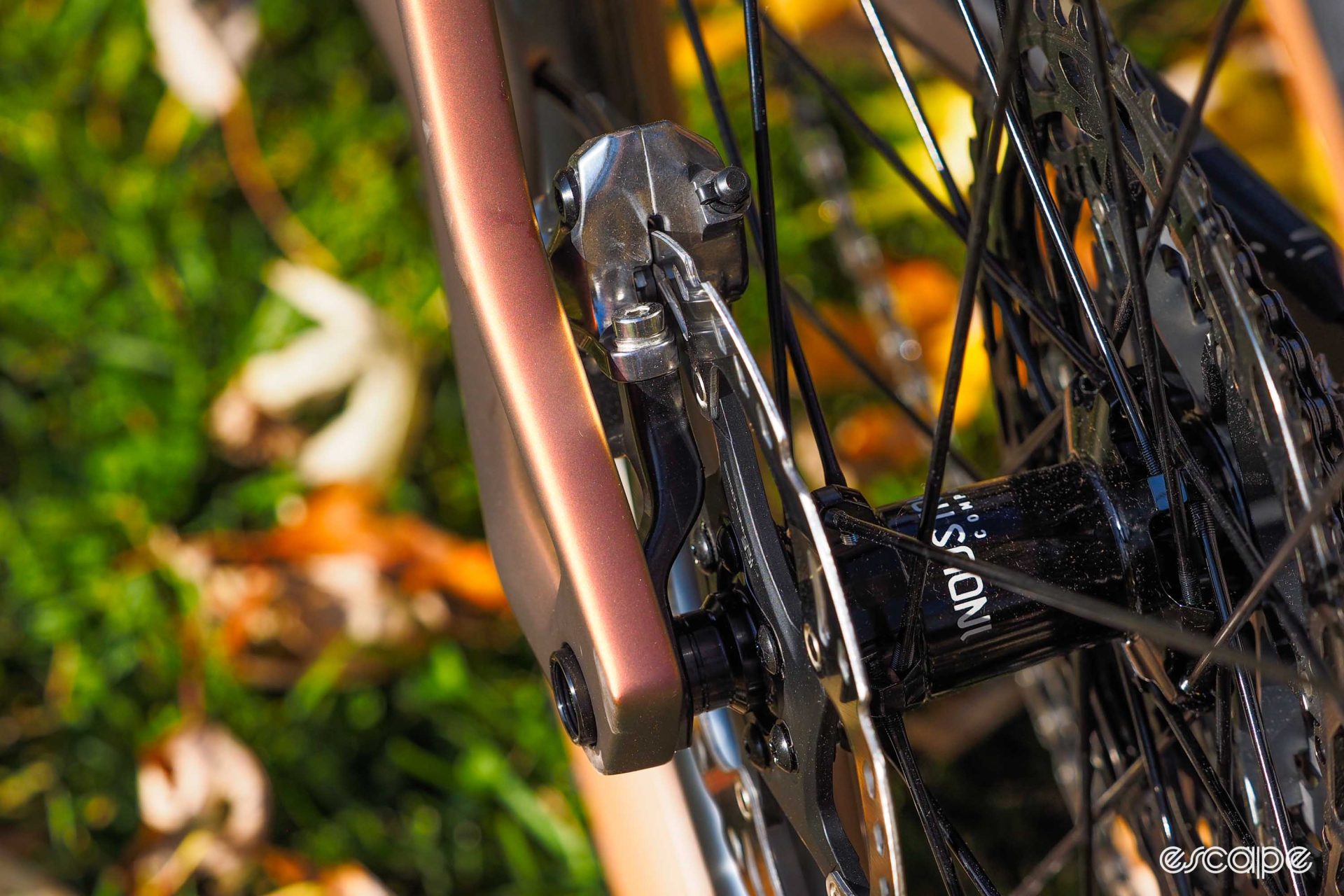
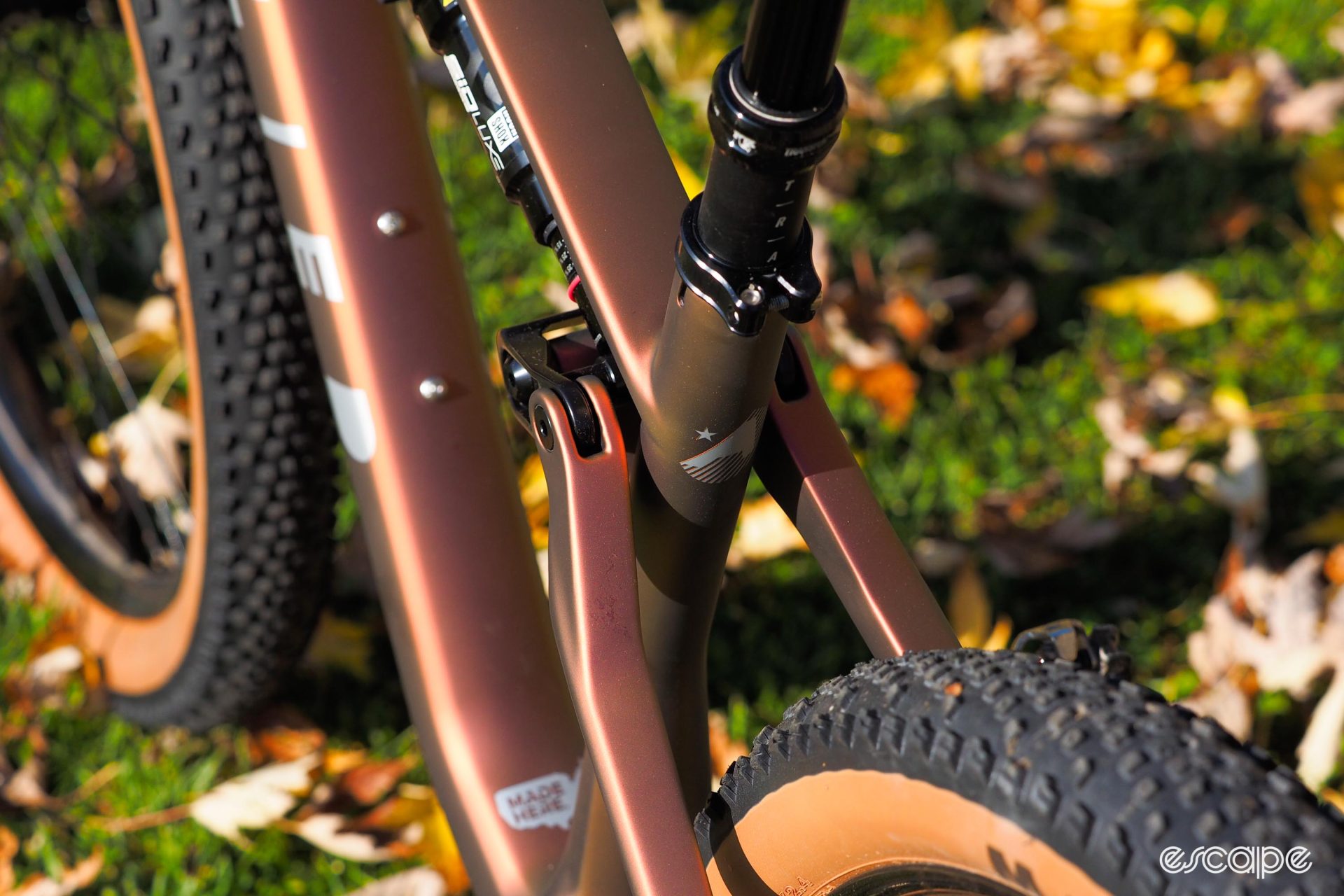
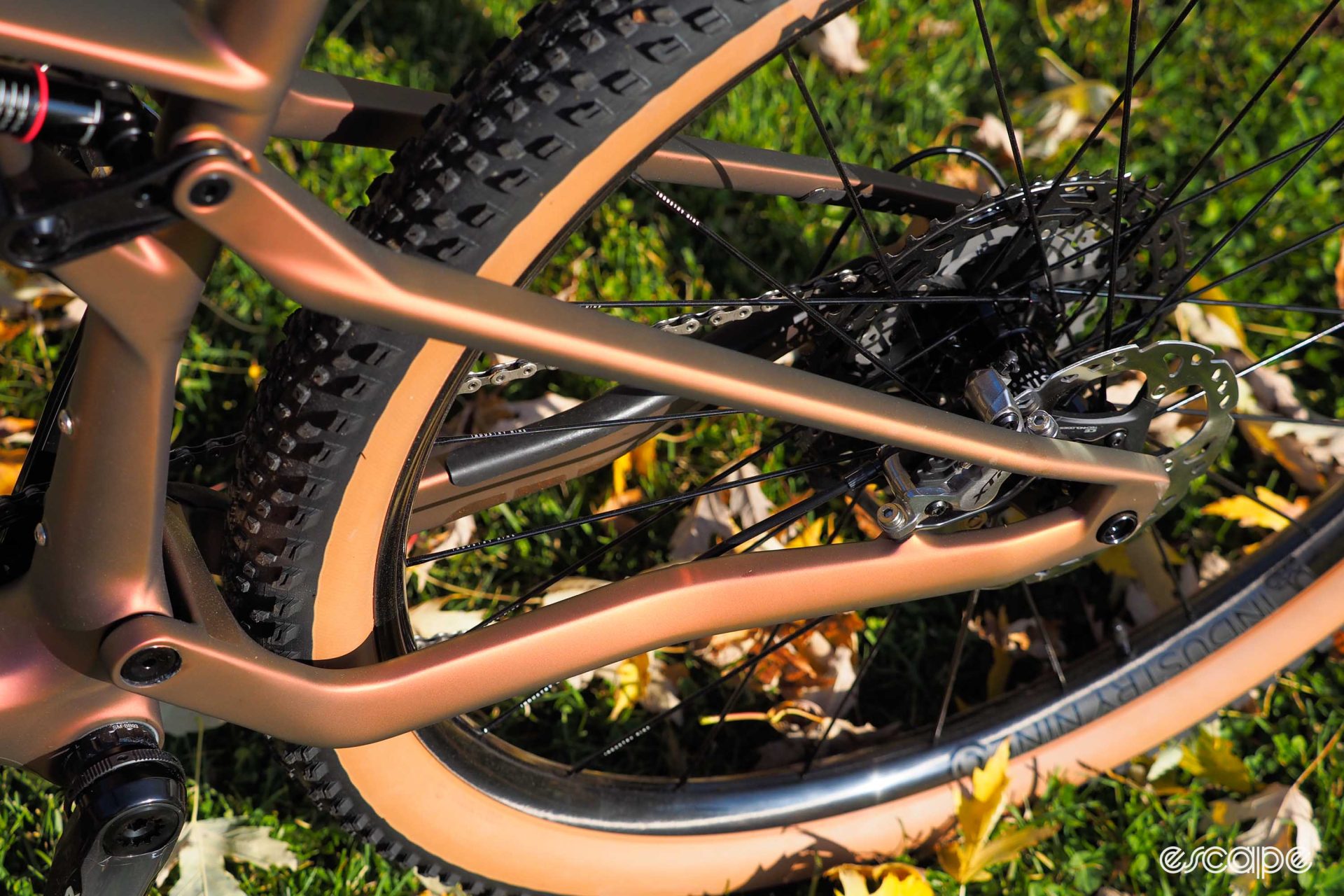
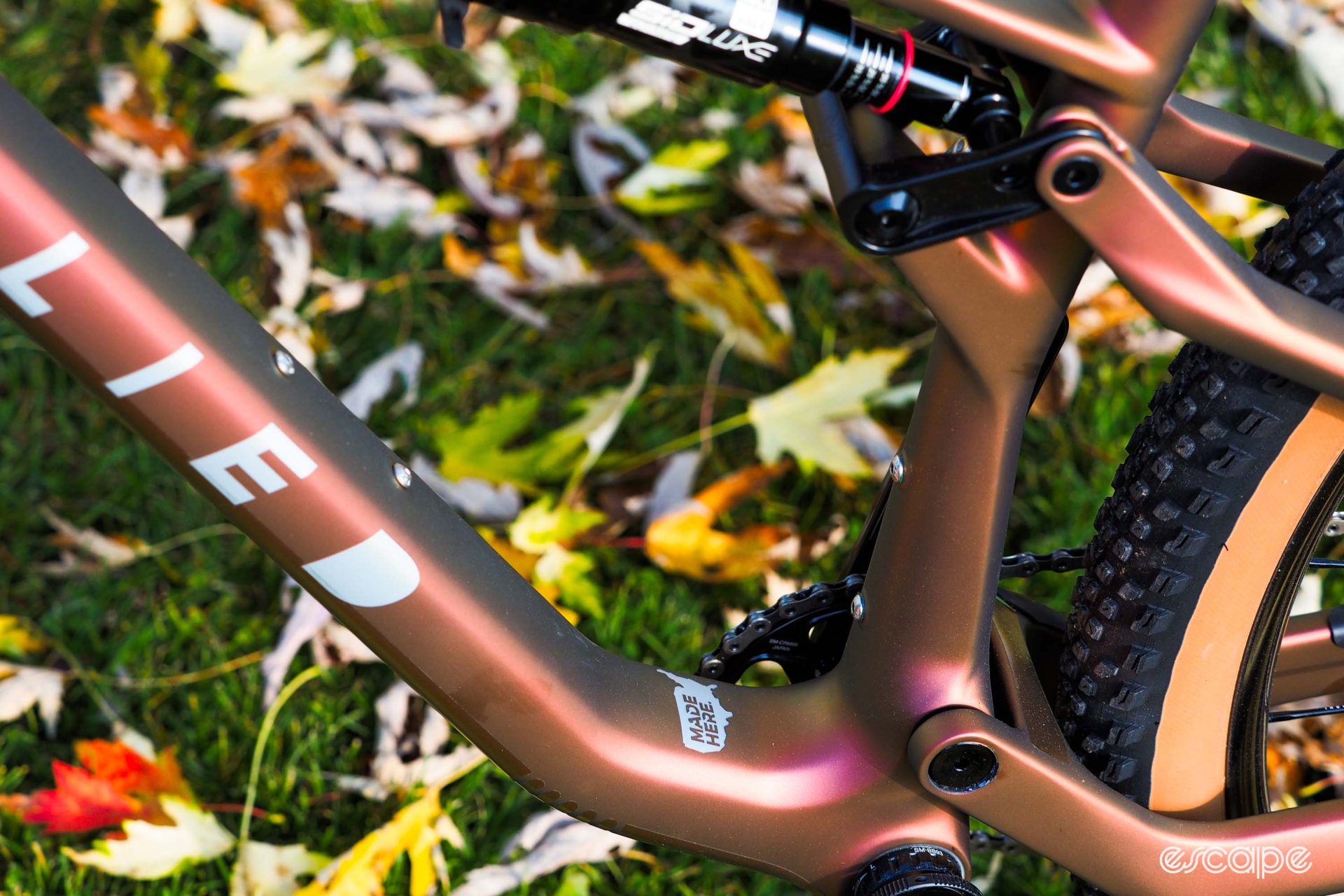
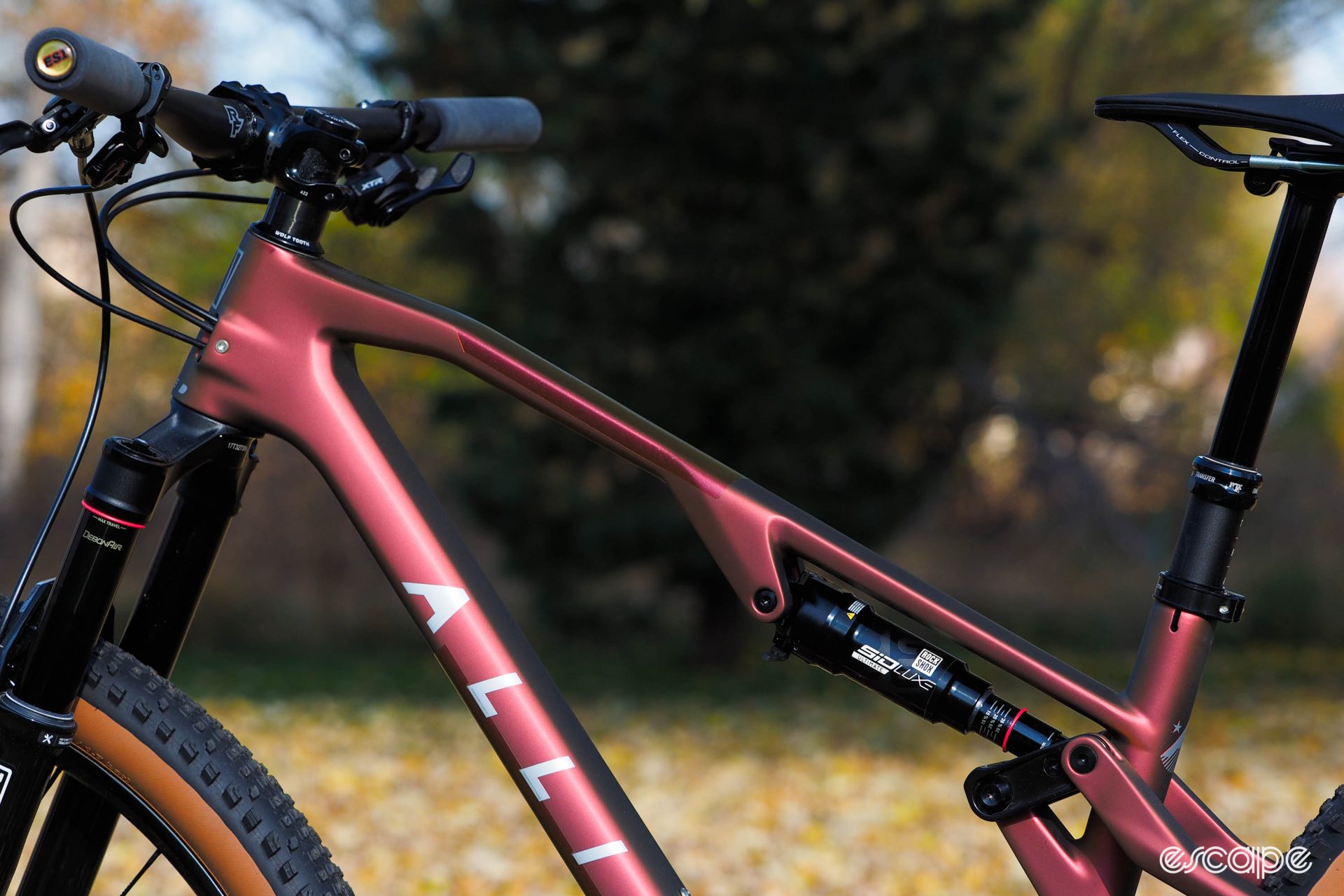
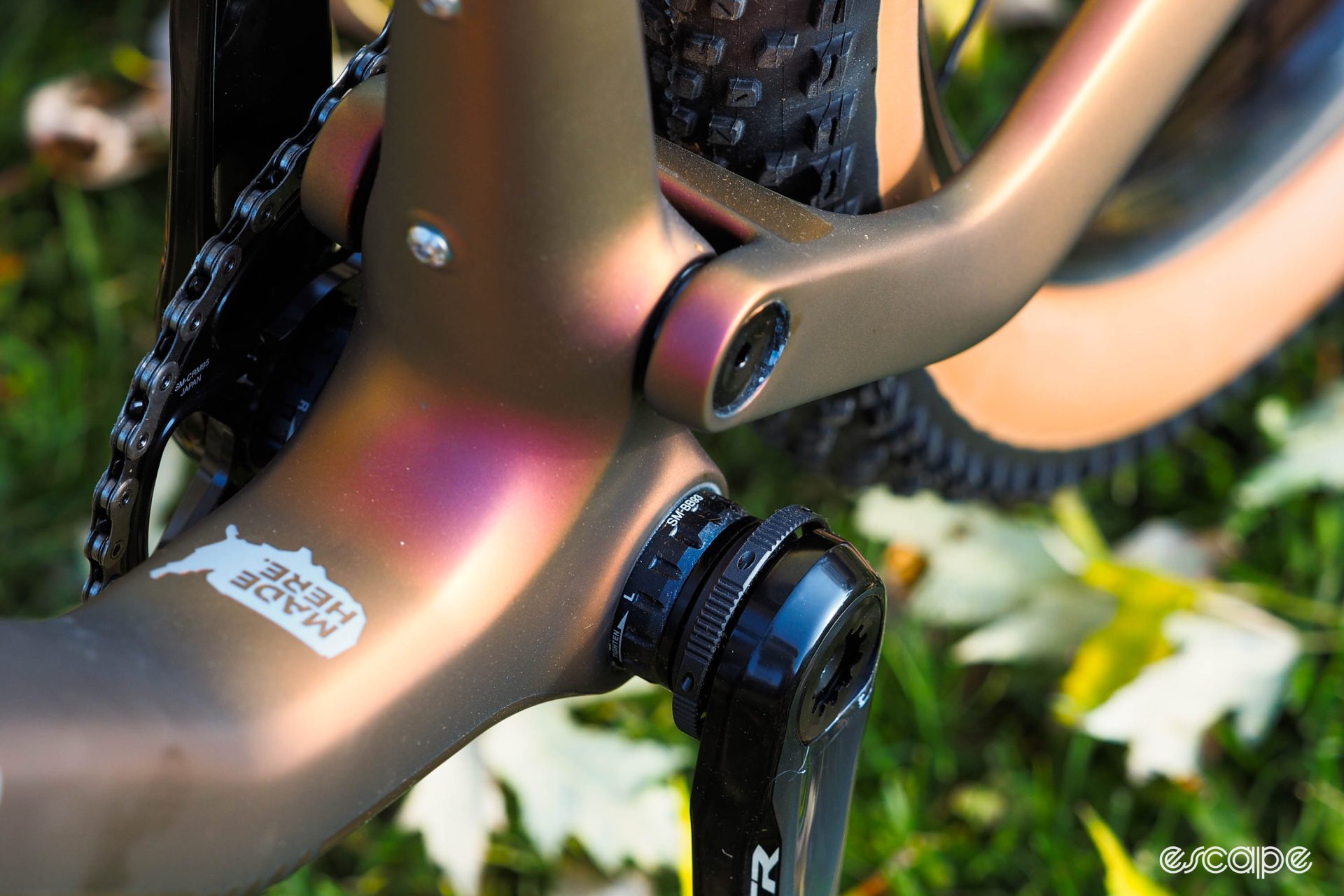
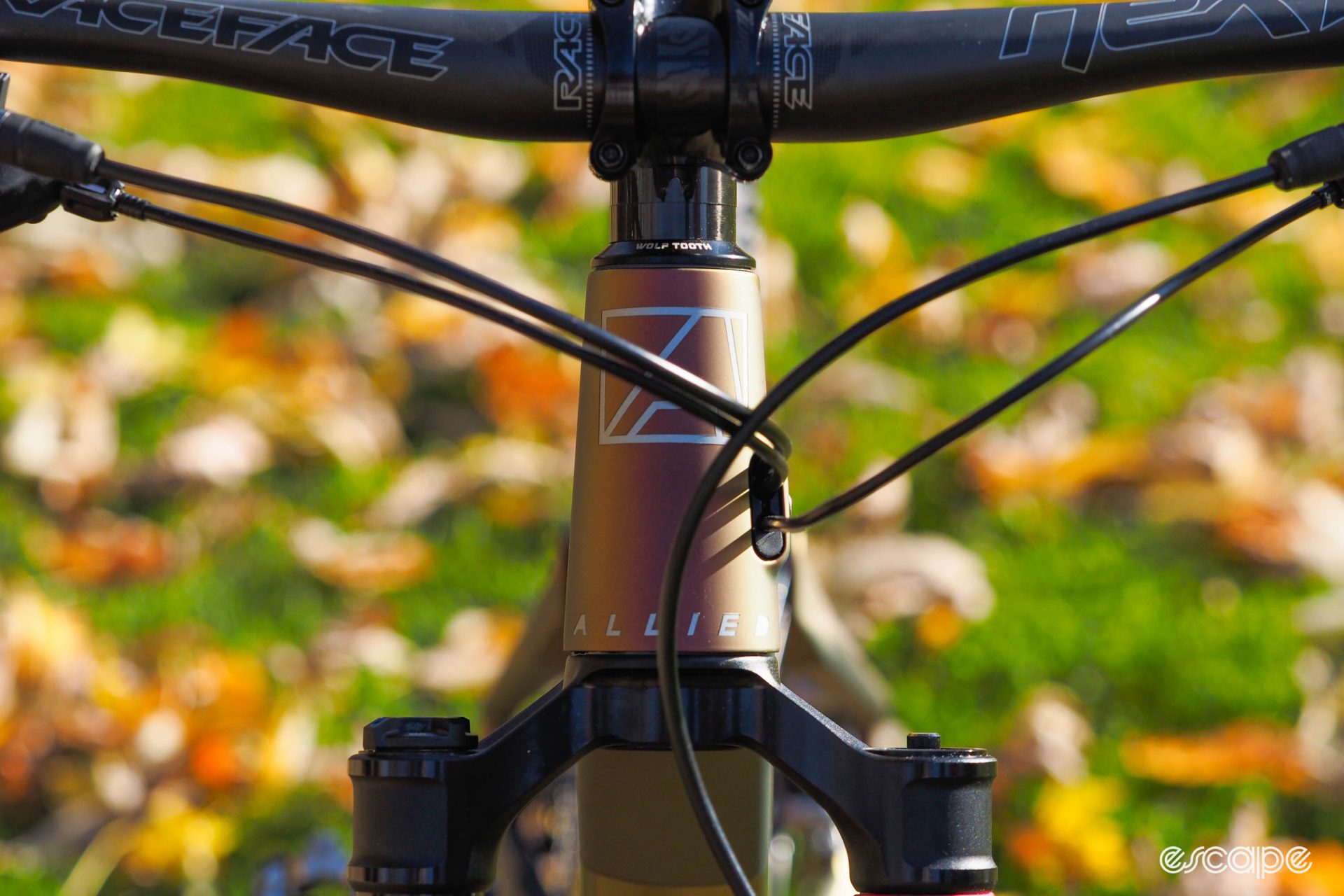
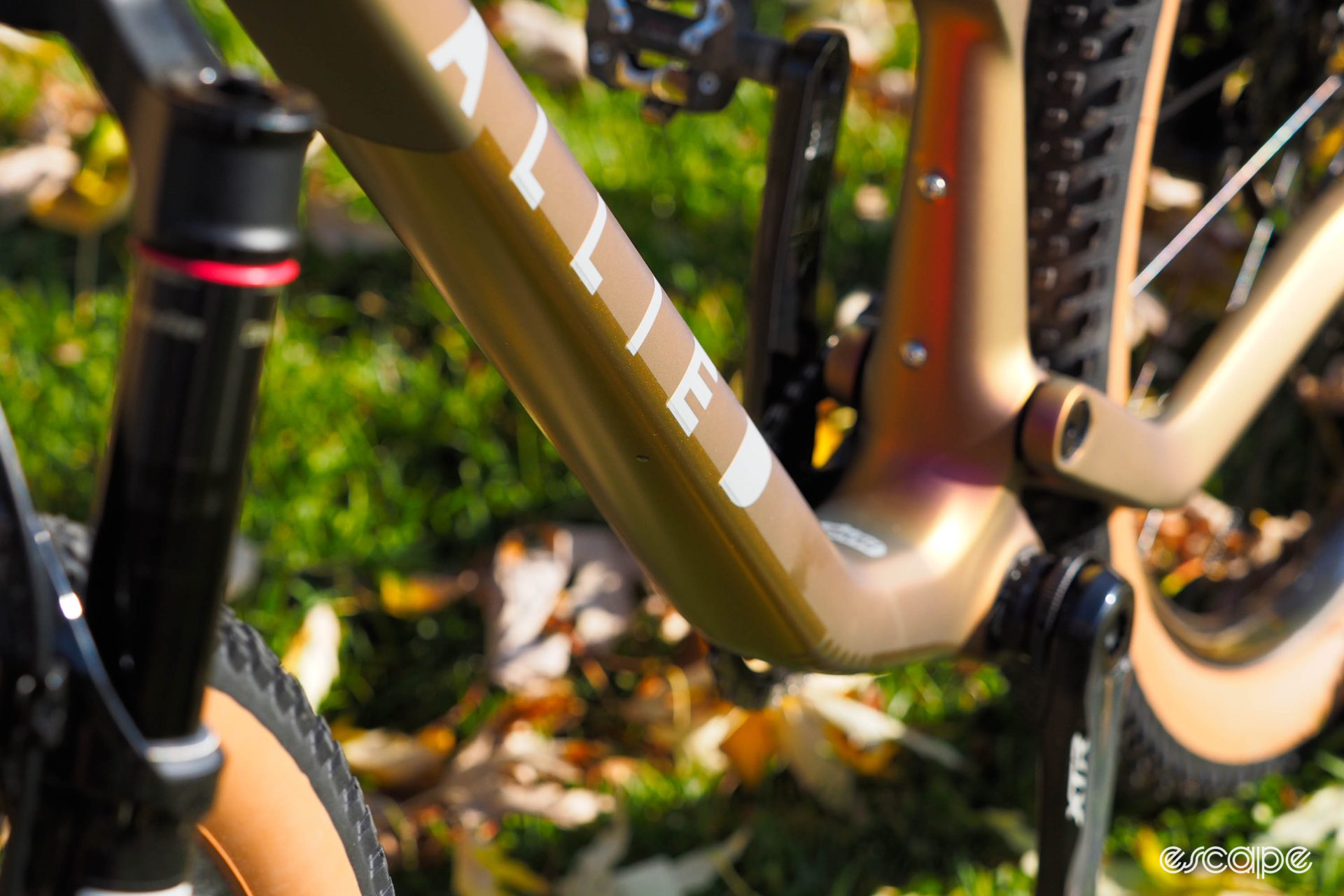
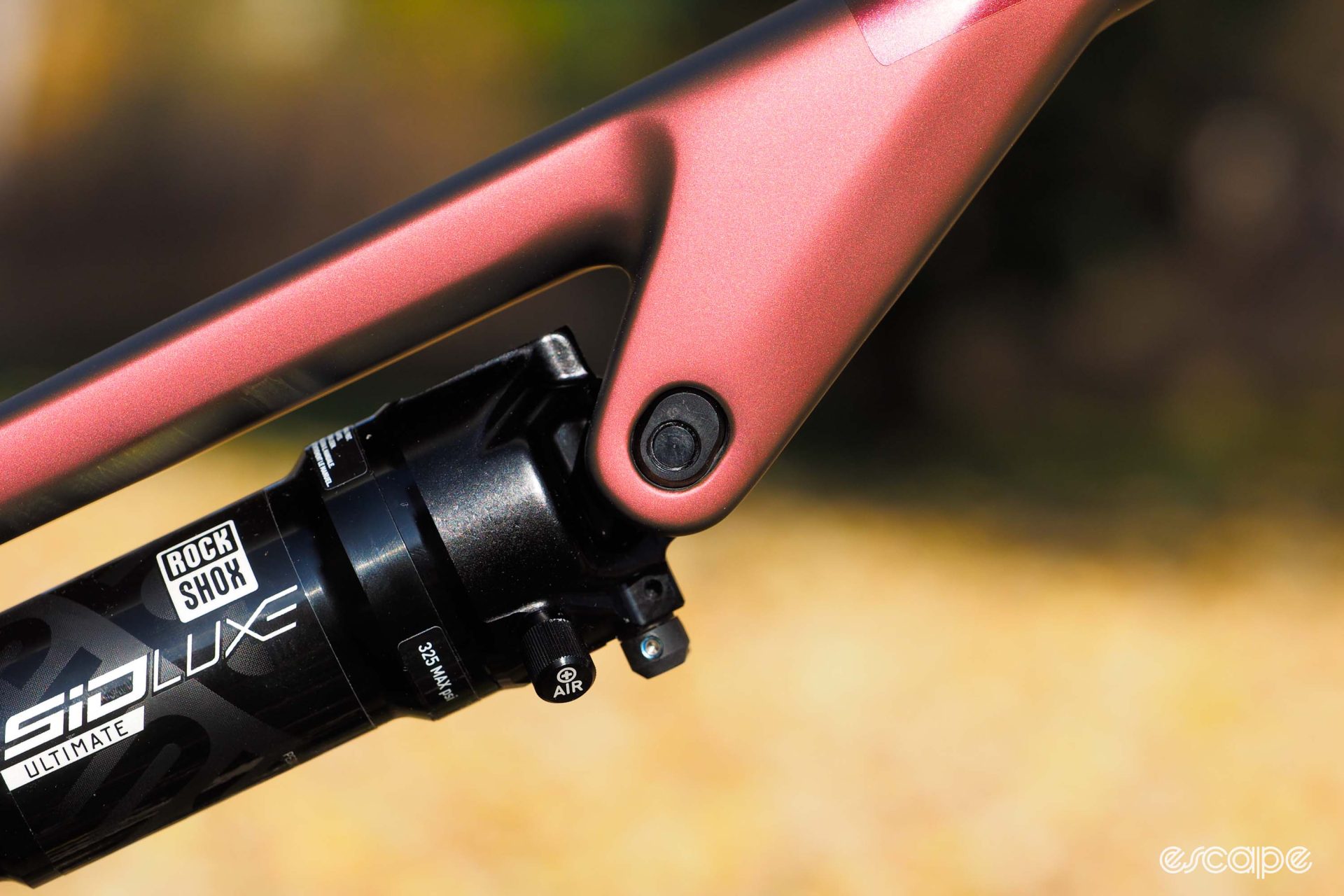
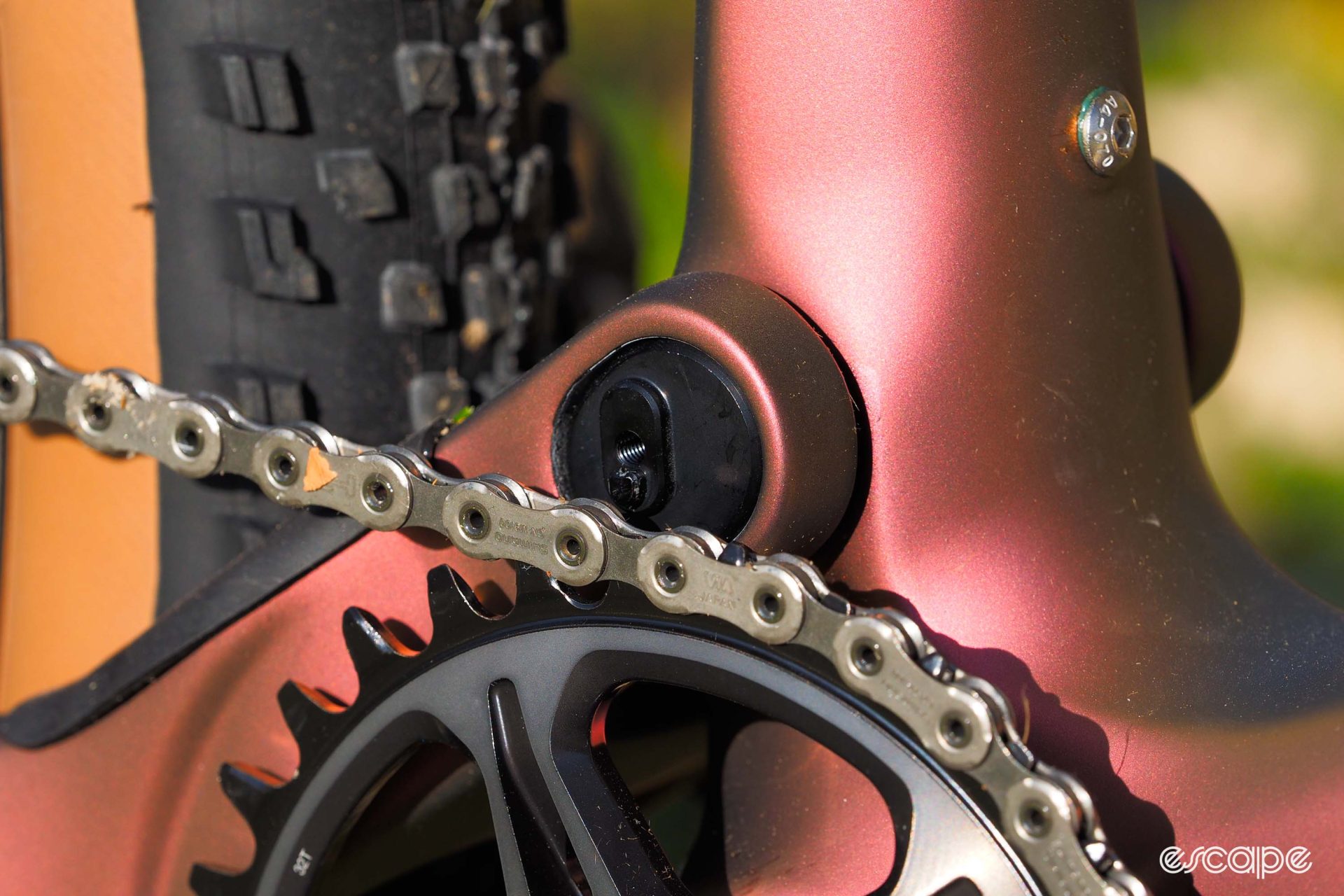
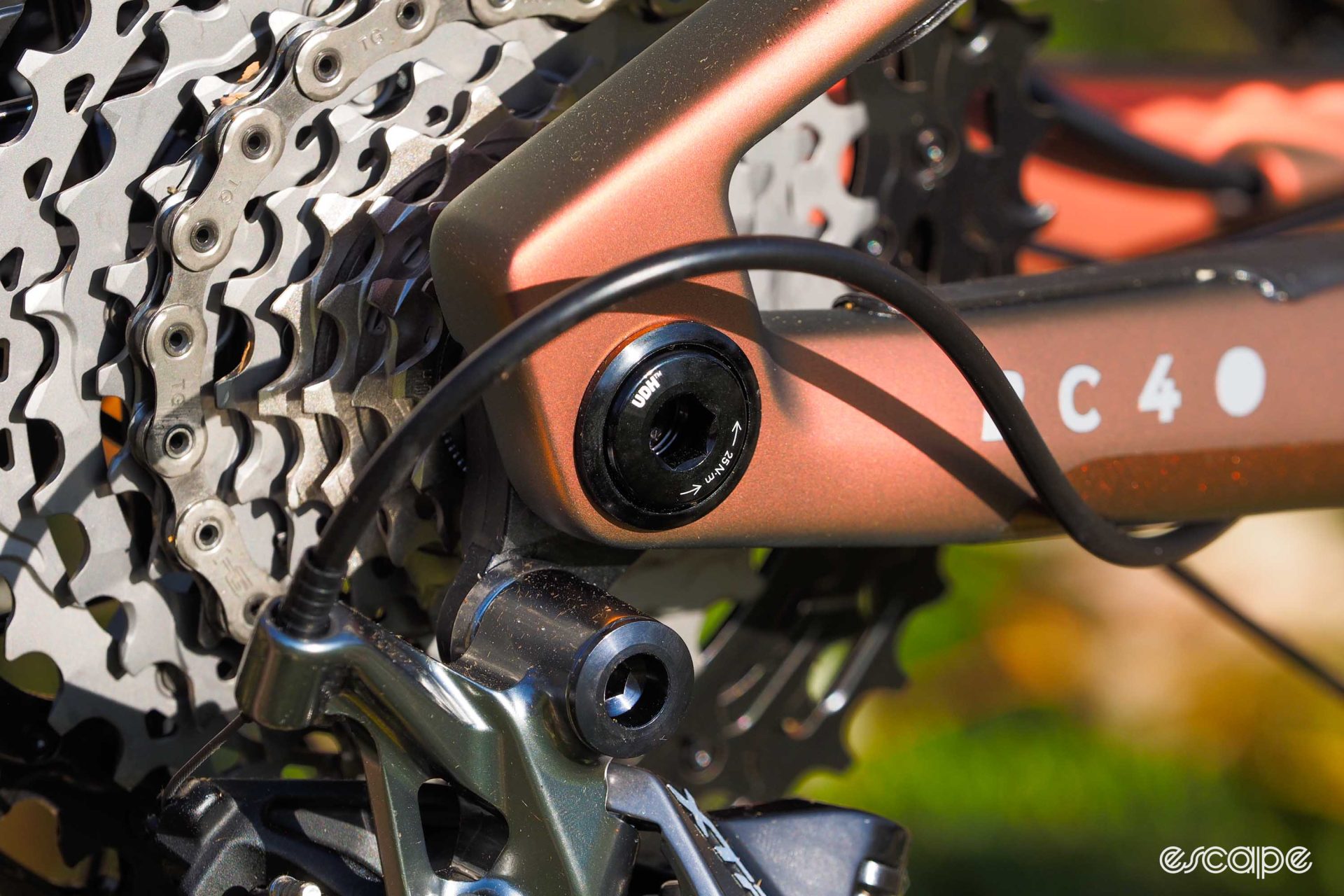

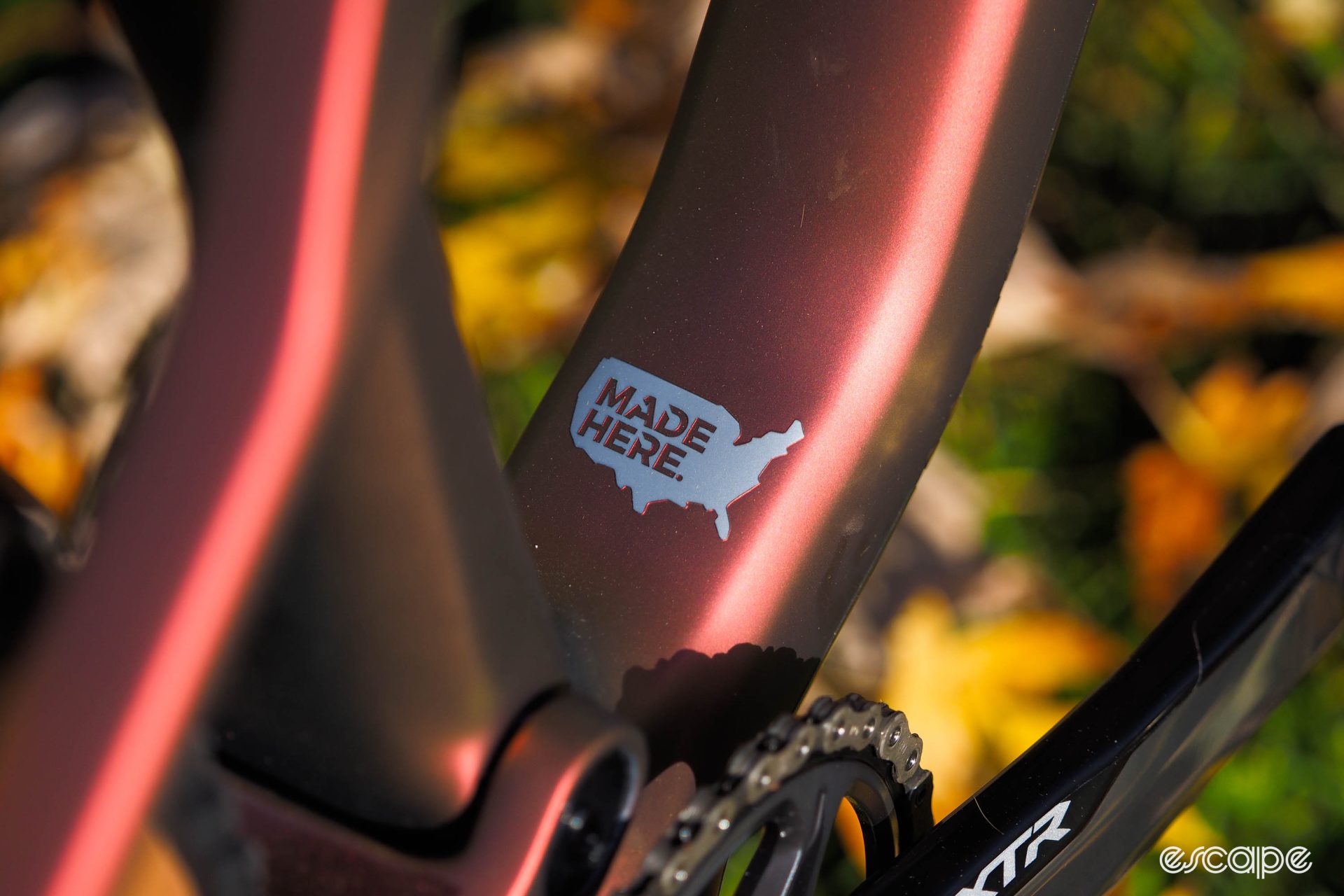
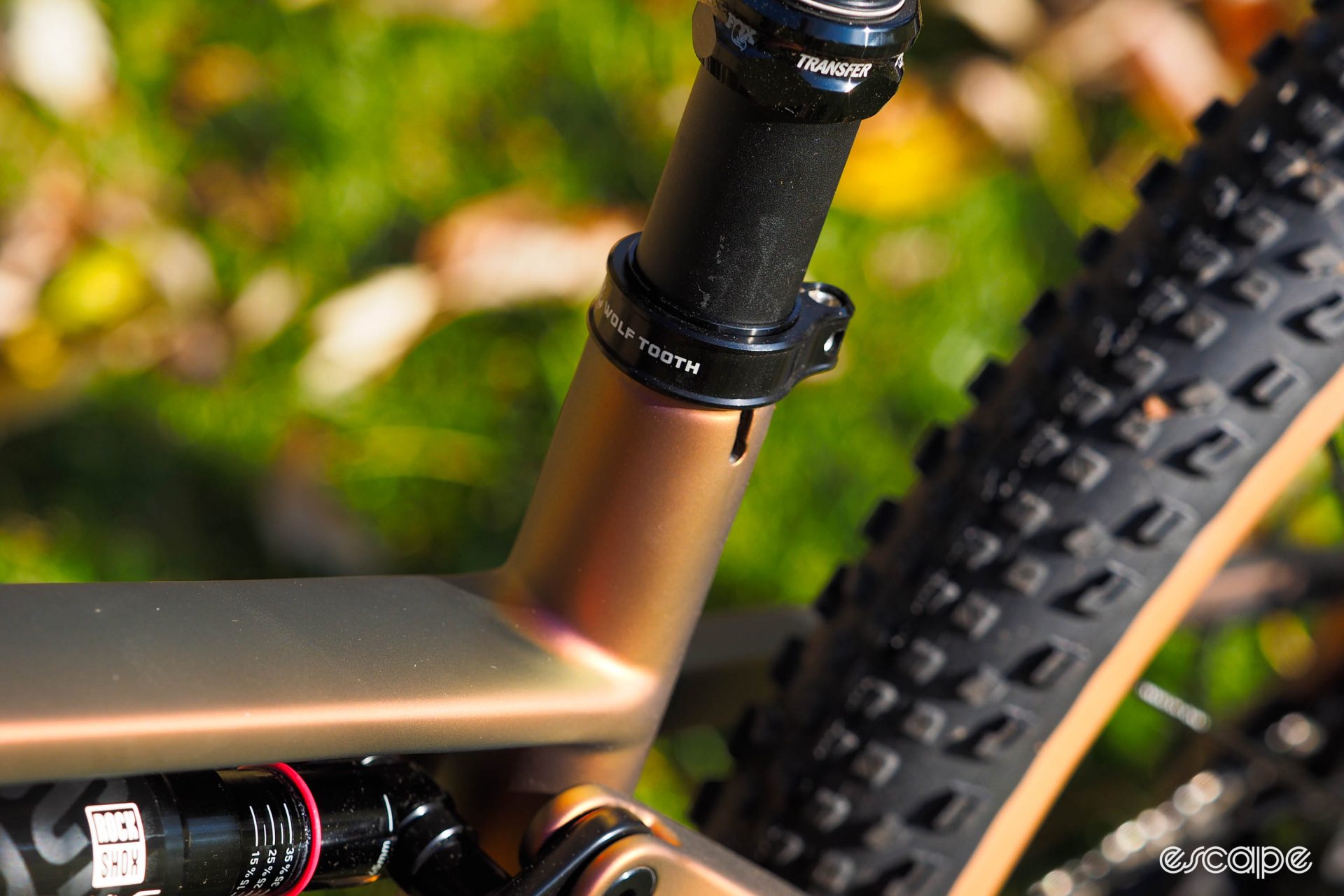
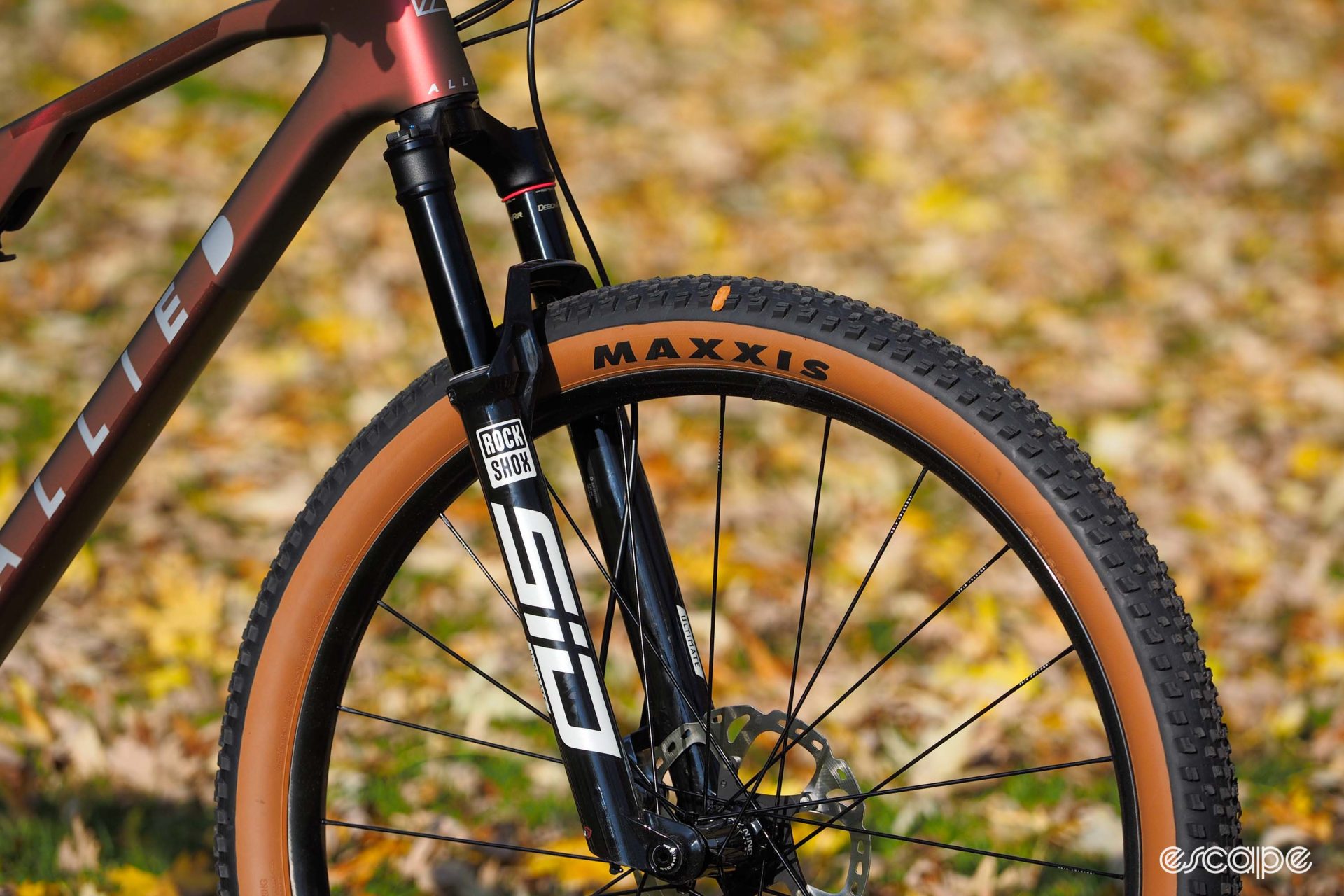
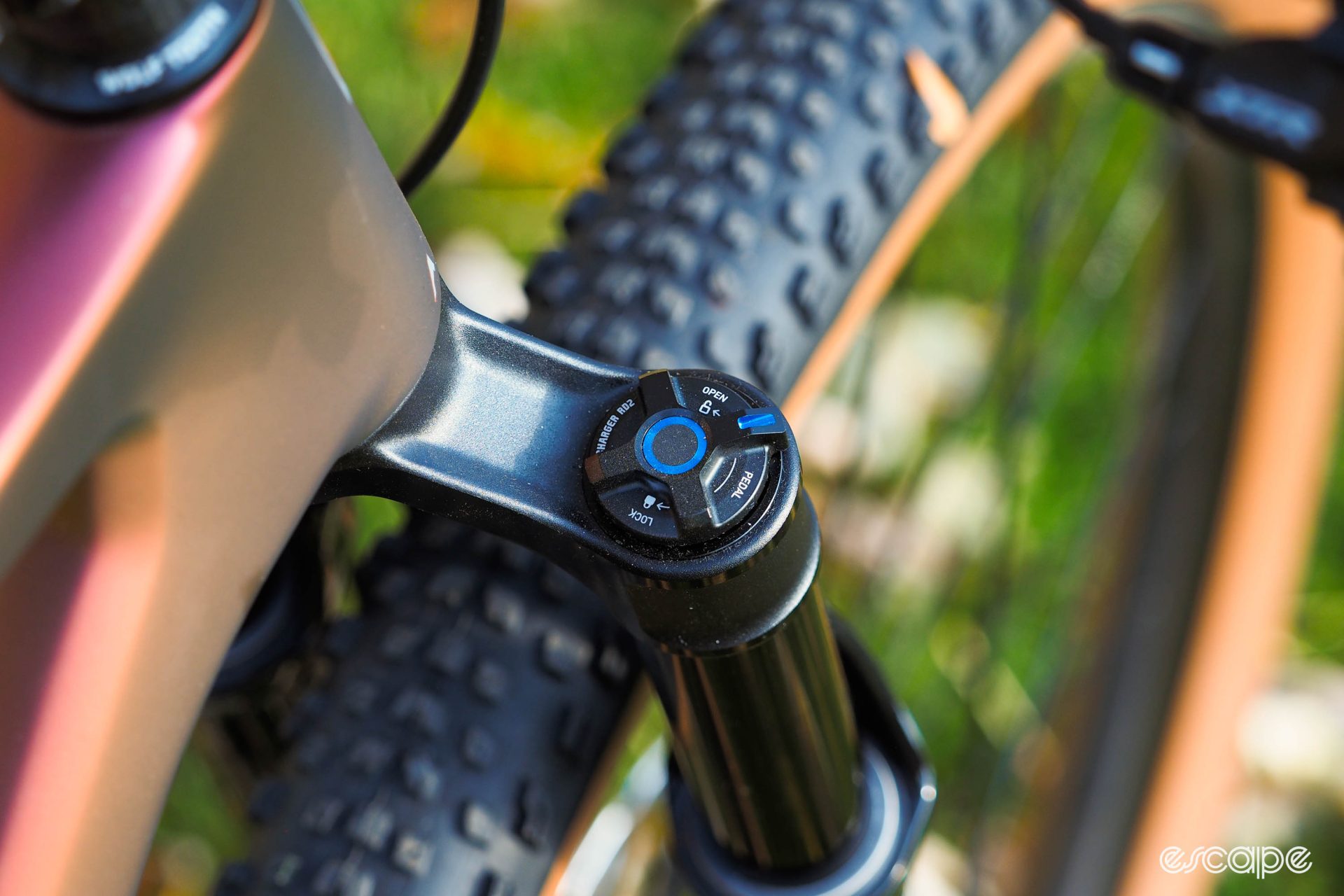
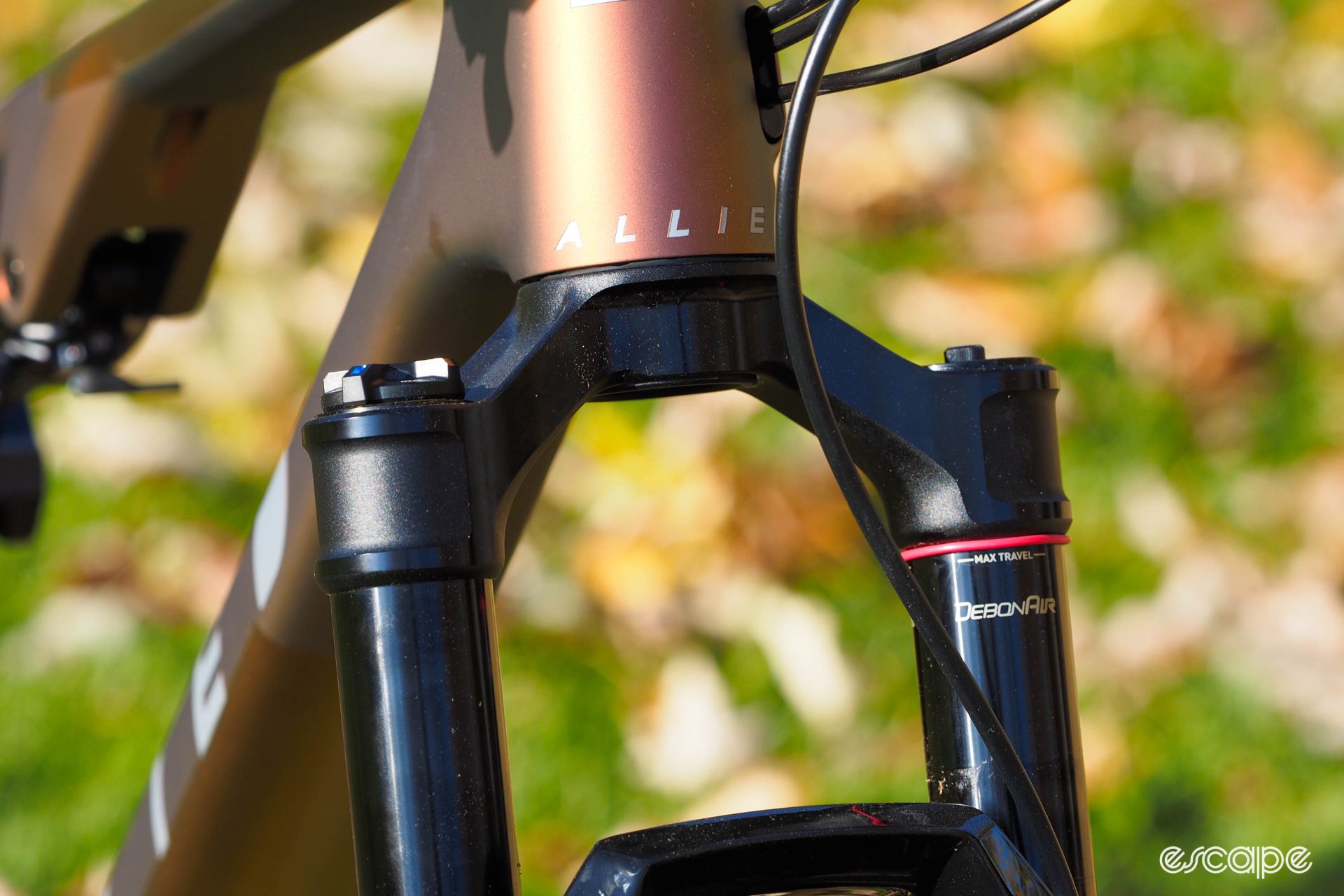
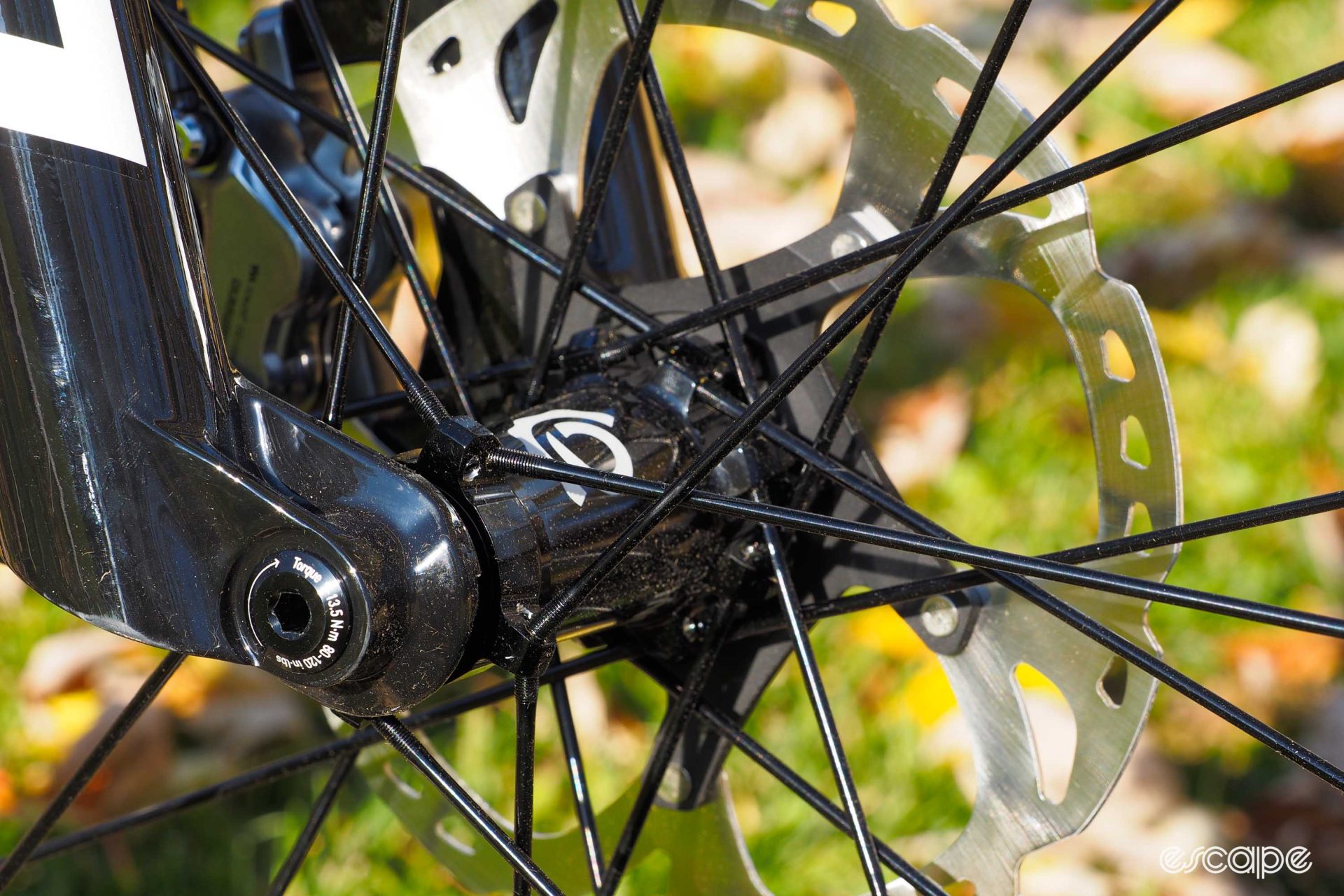
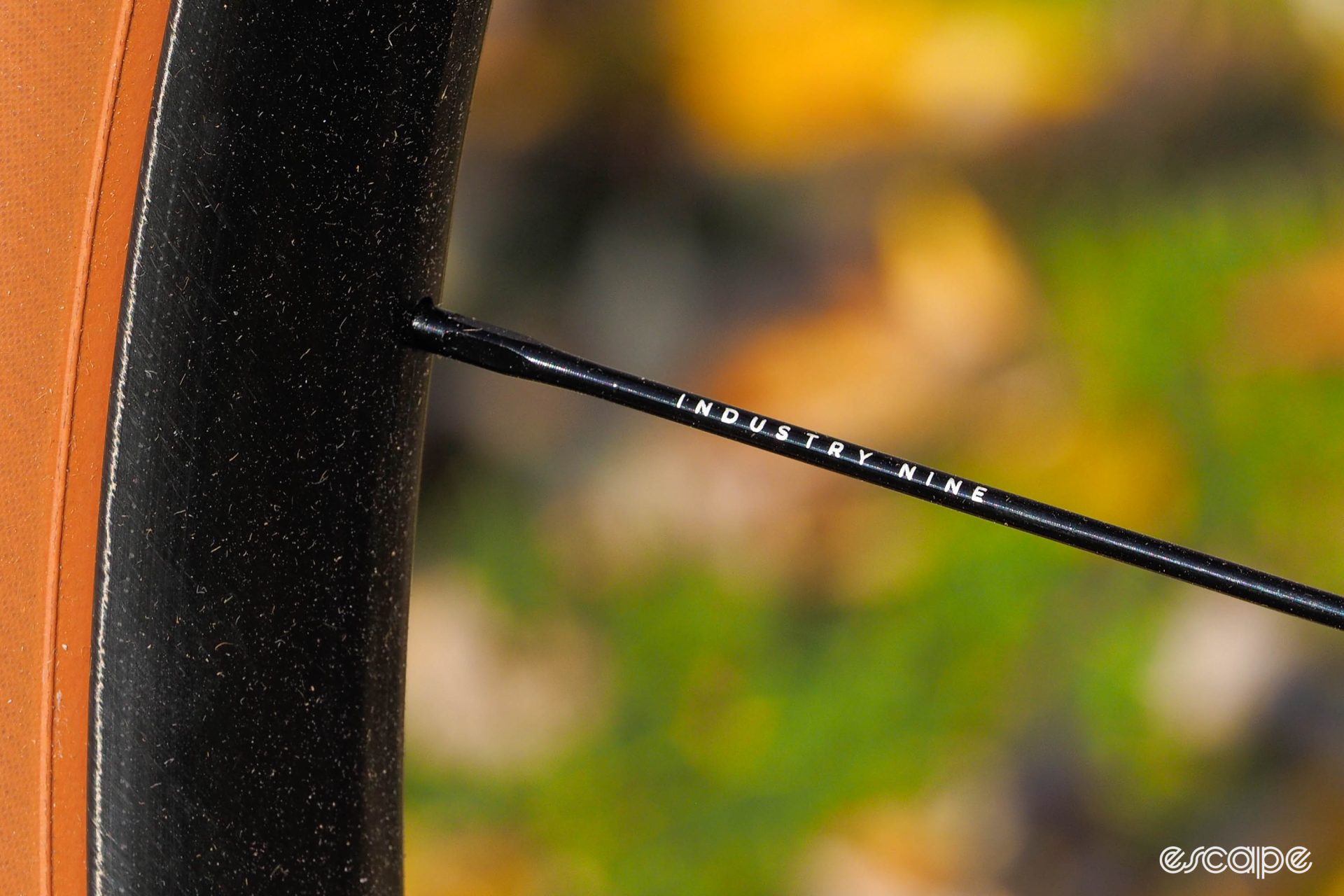
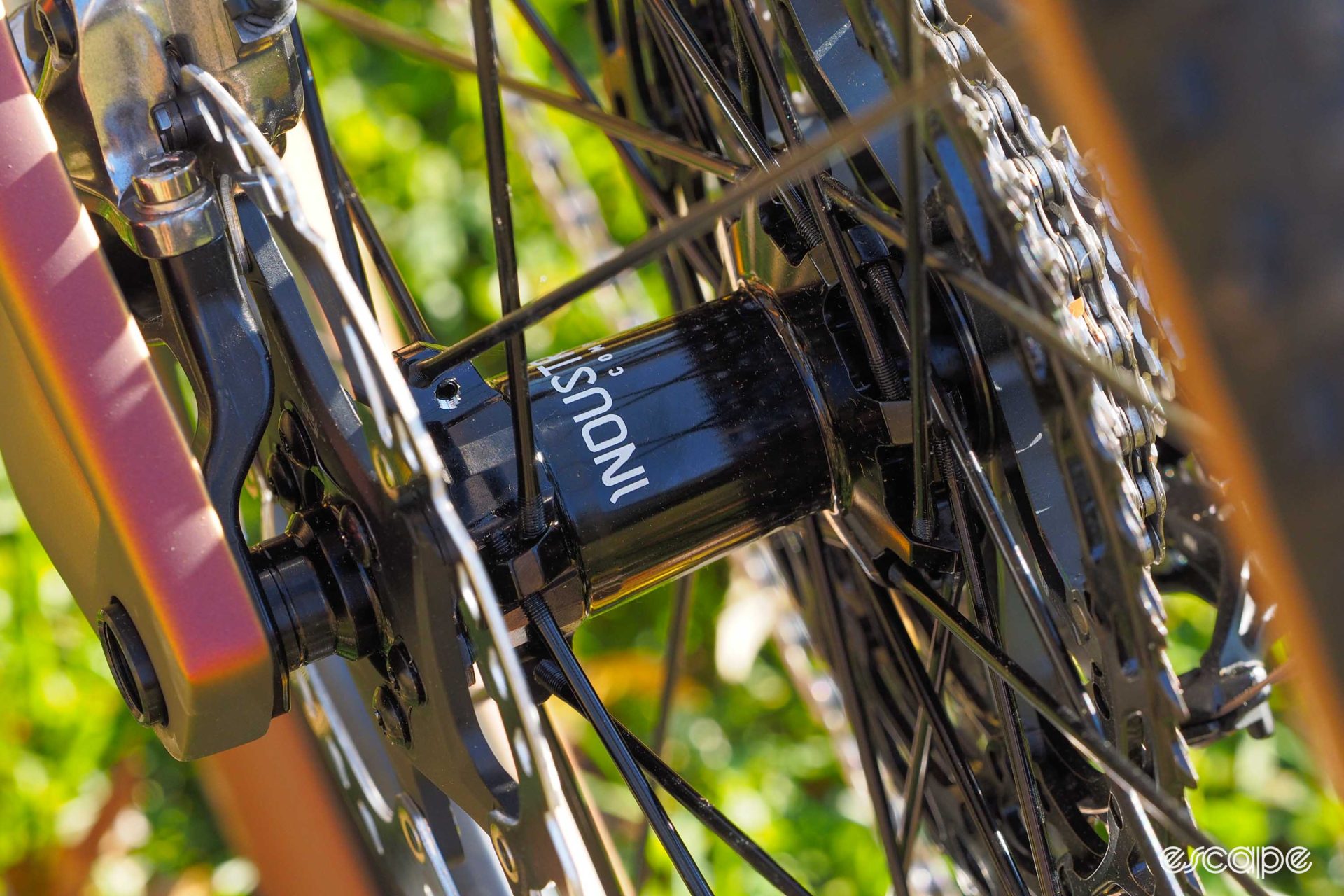
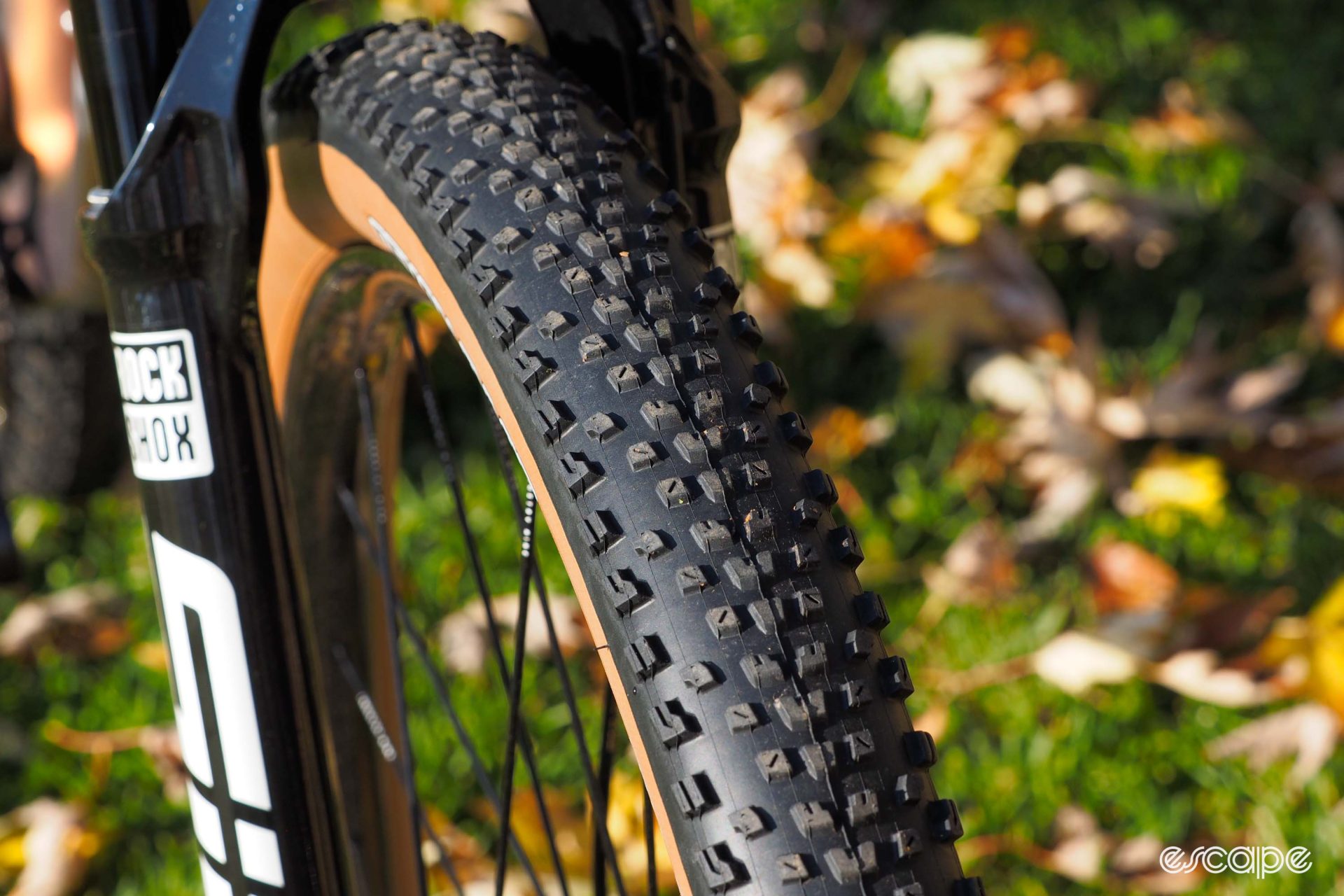
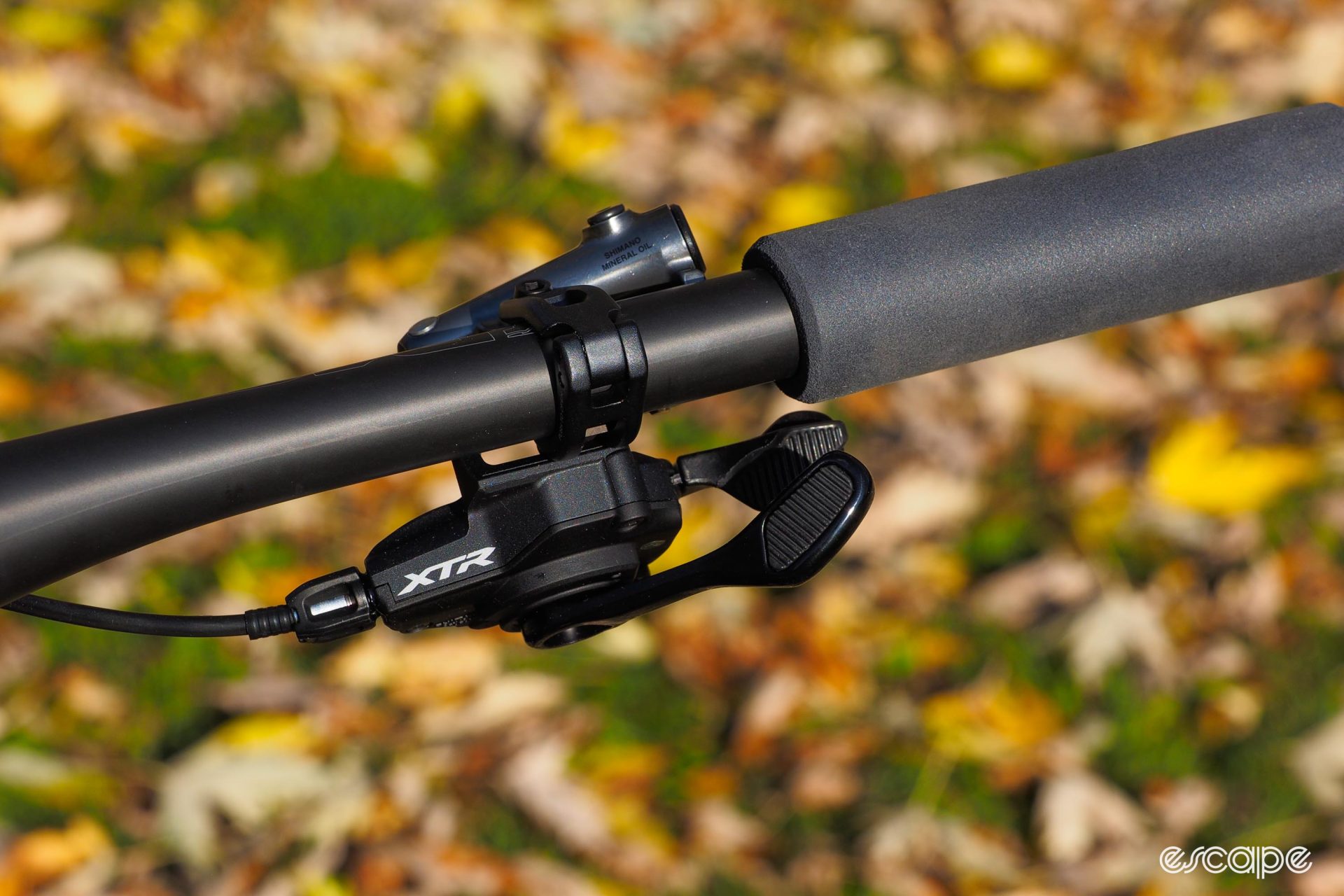
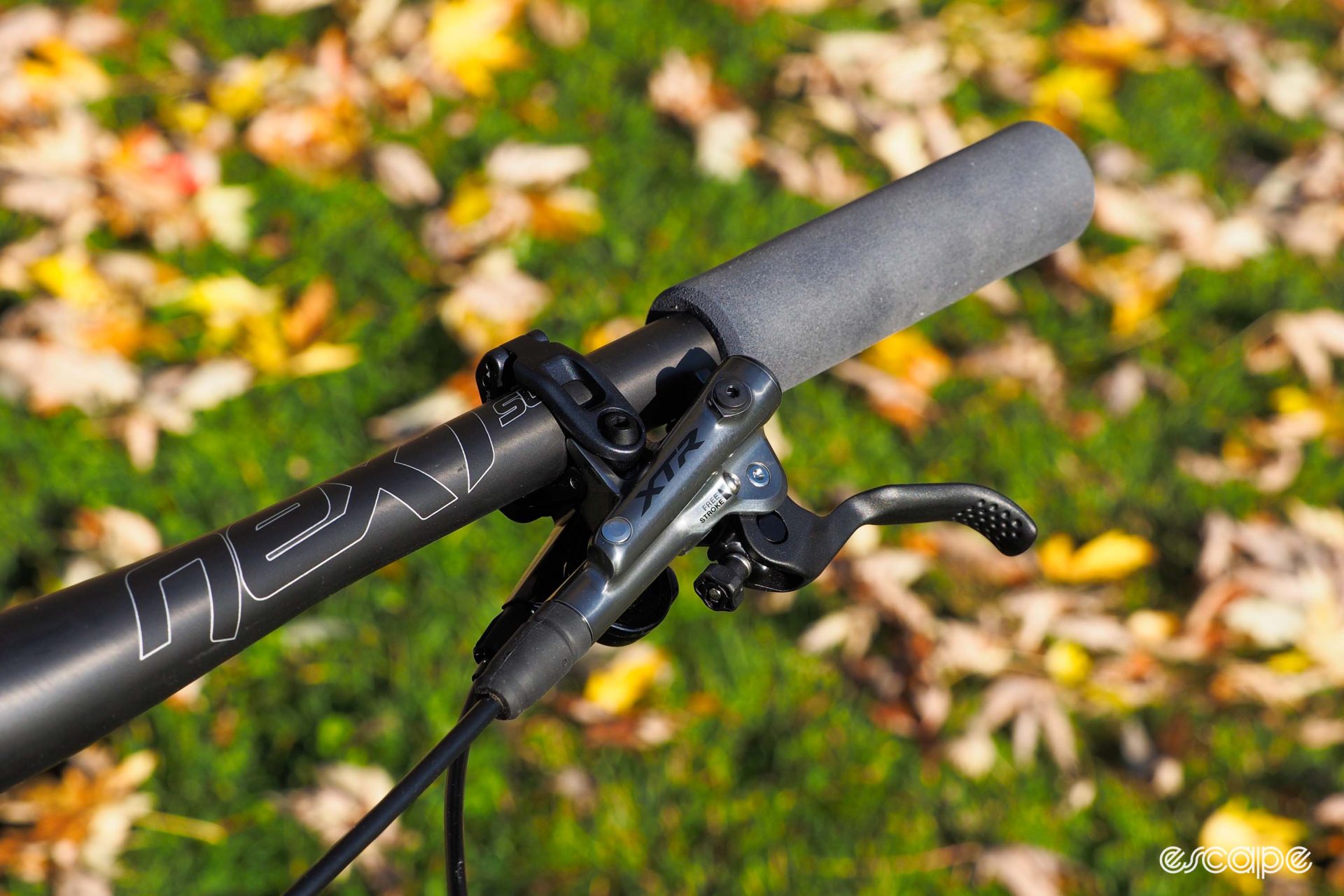
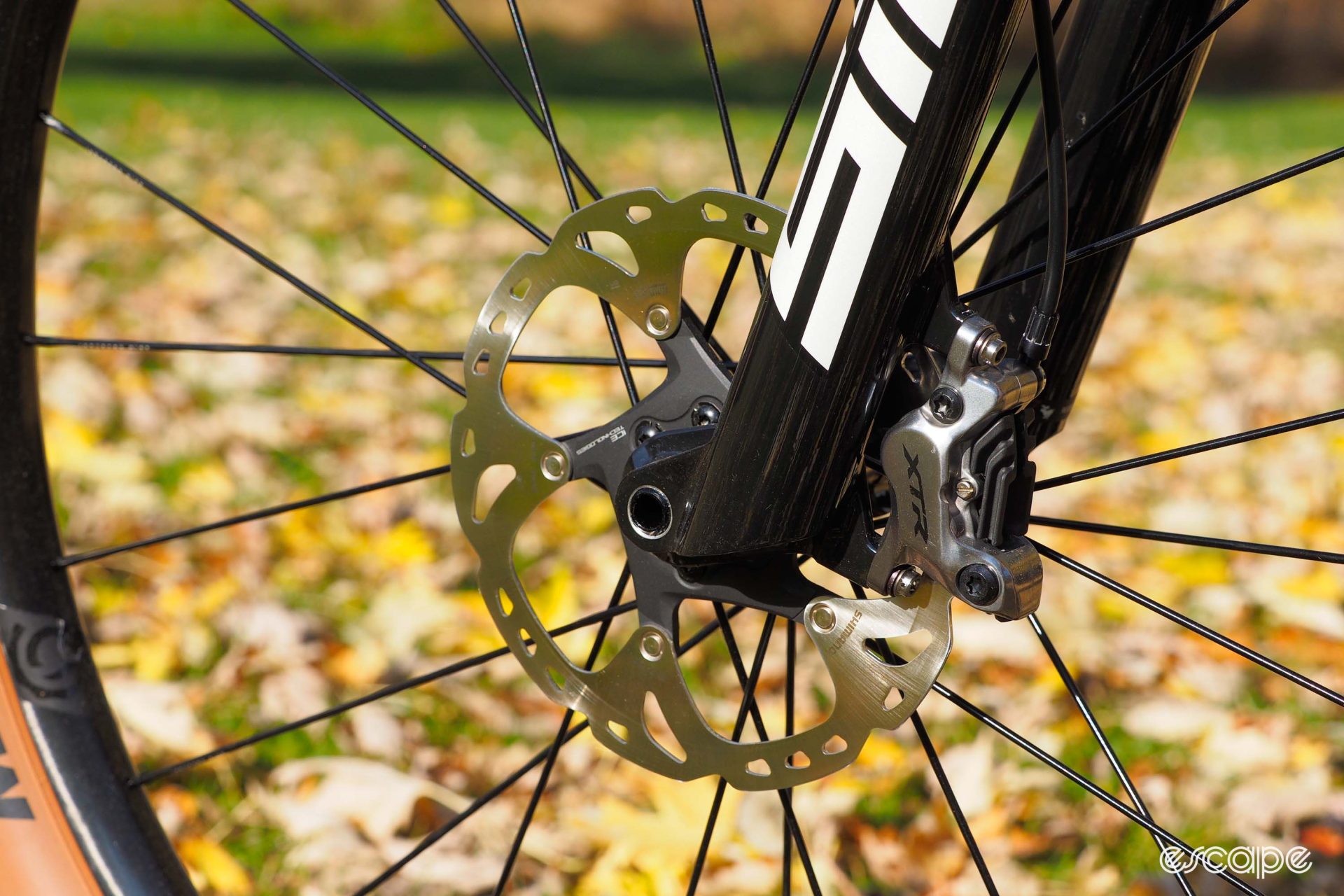
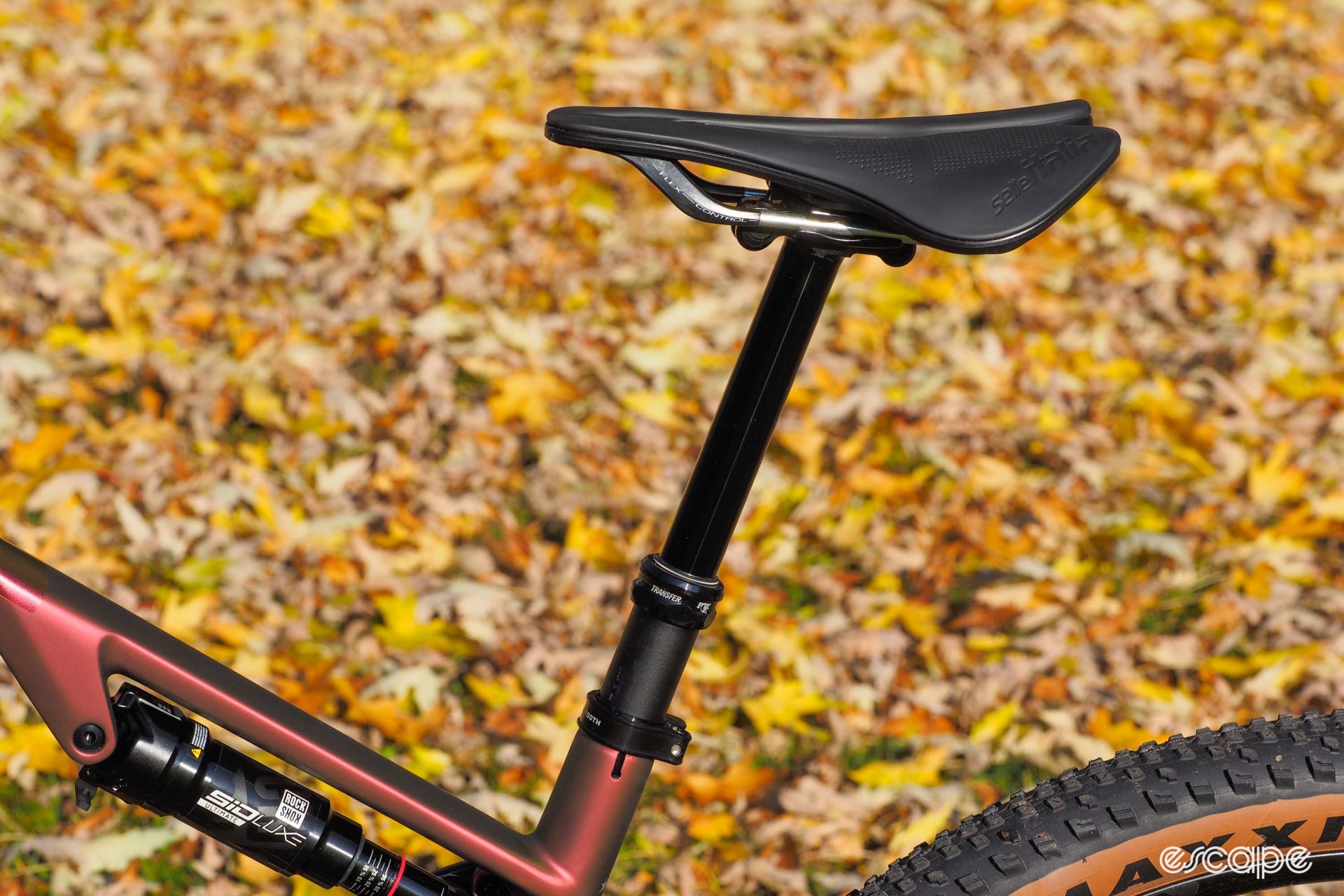
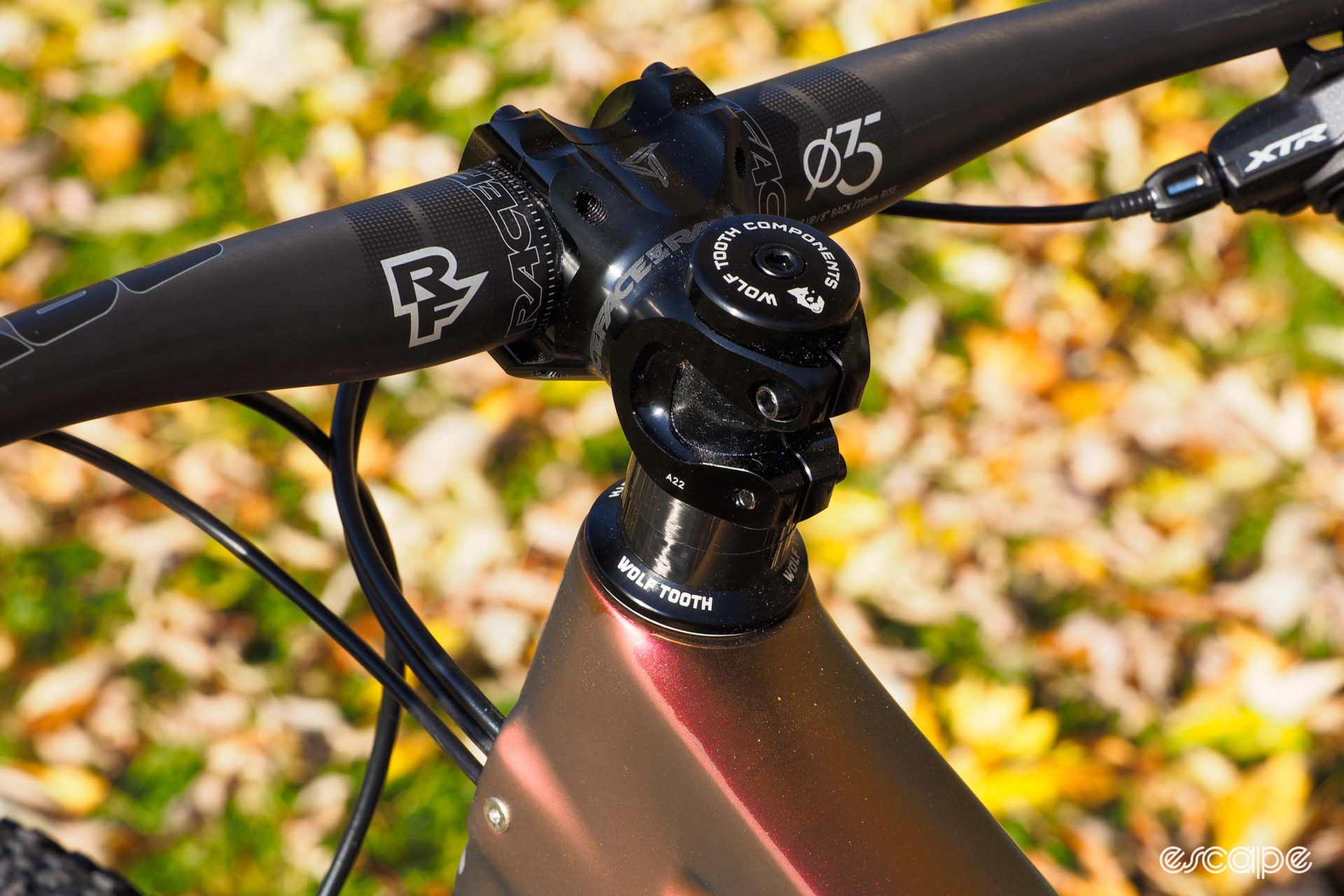
Did we do a good job with this story?

